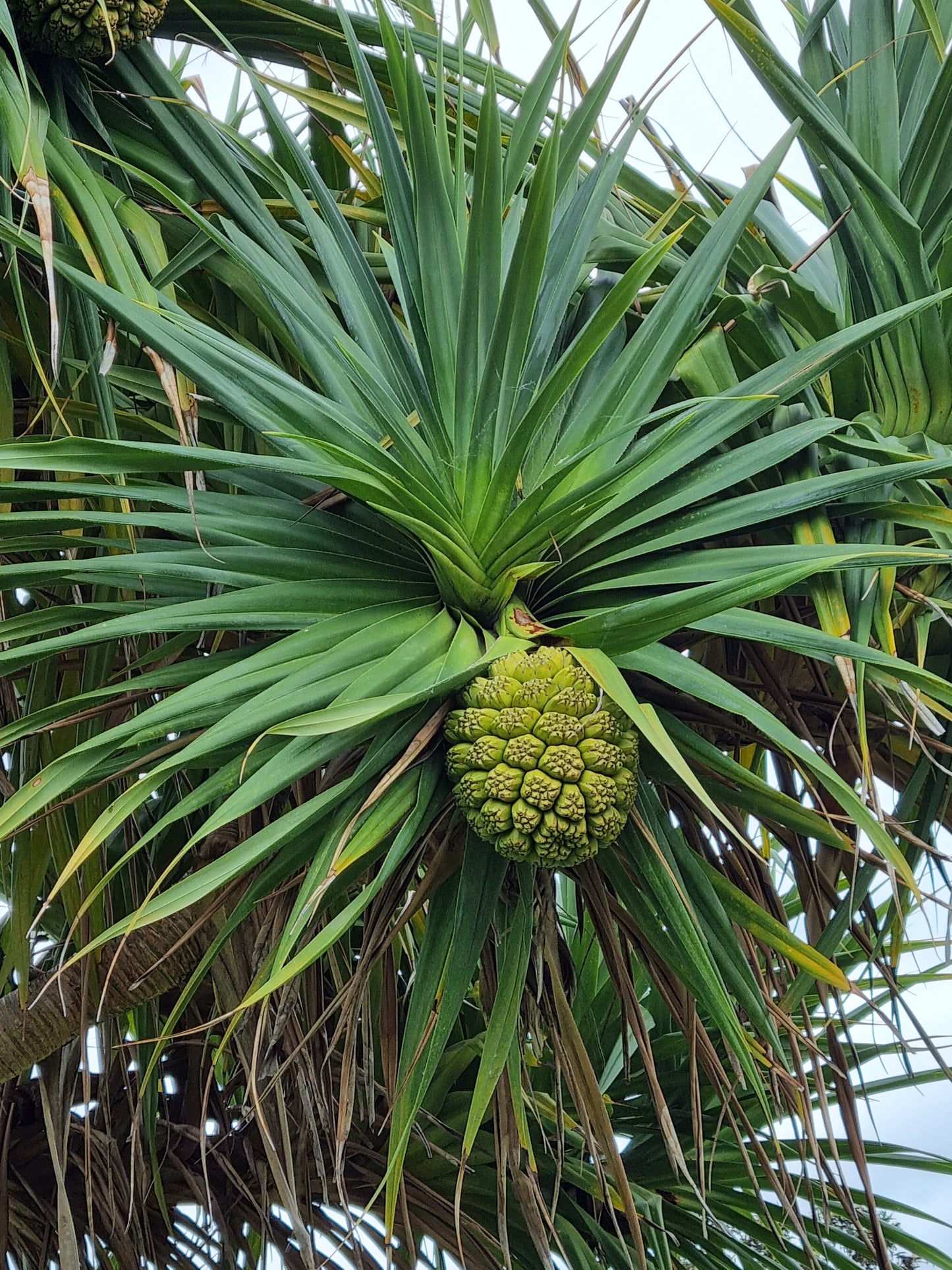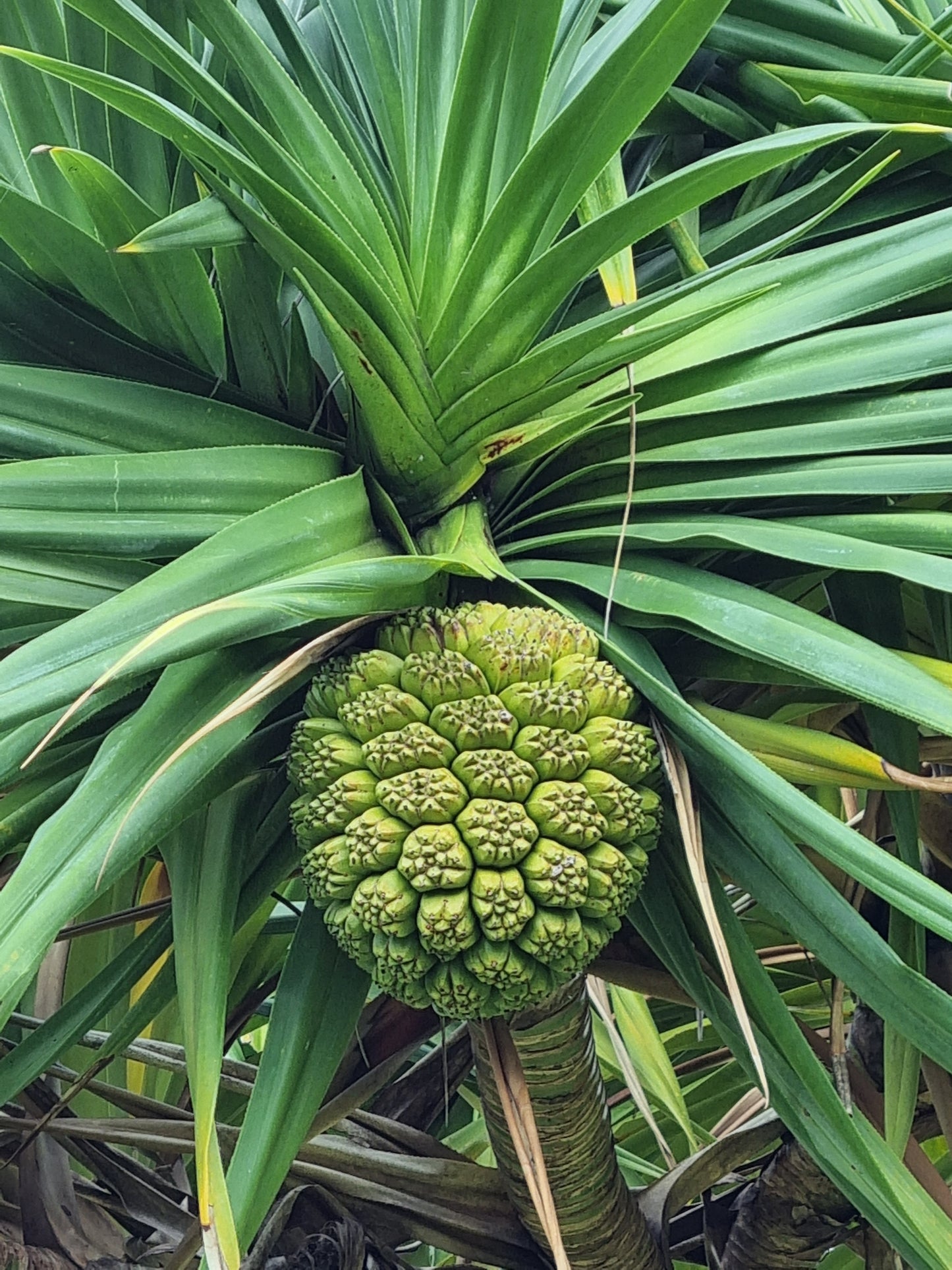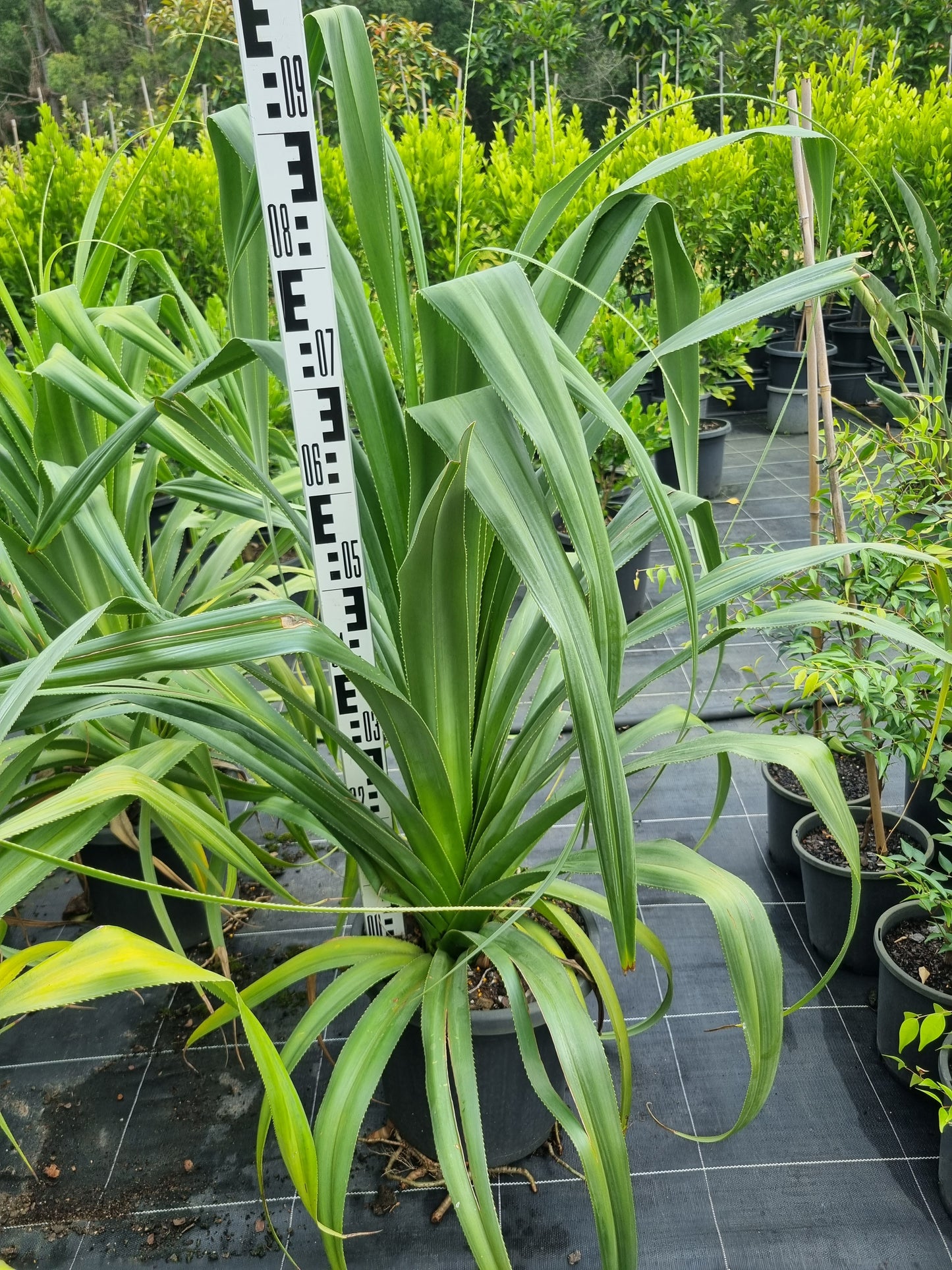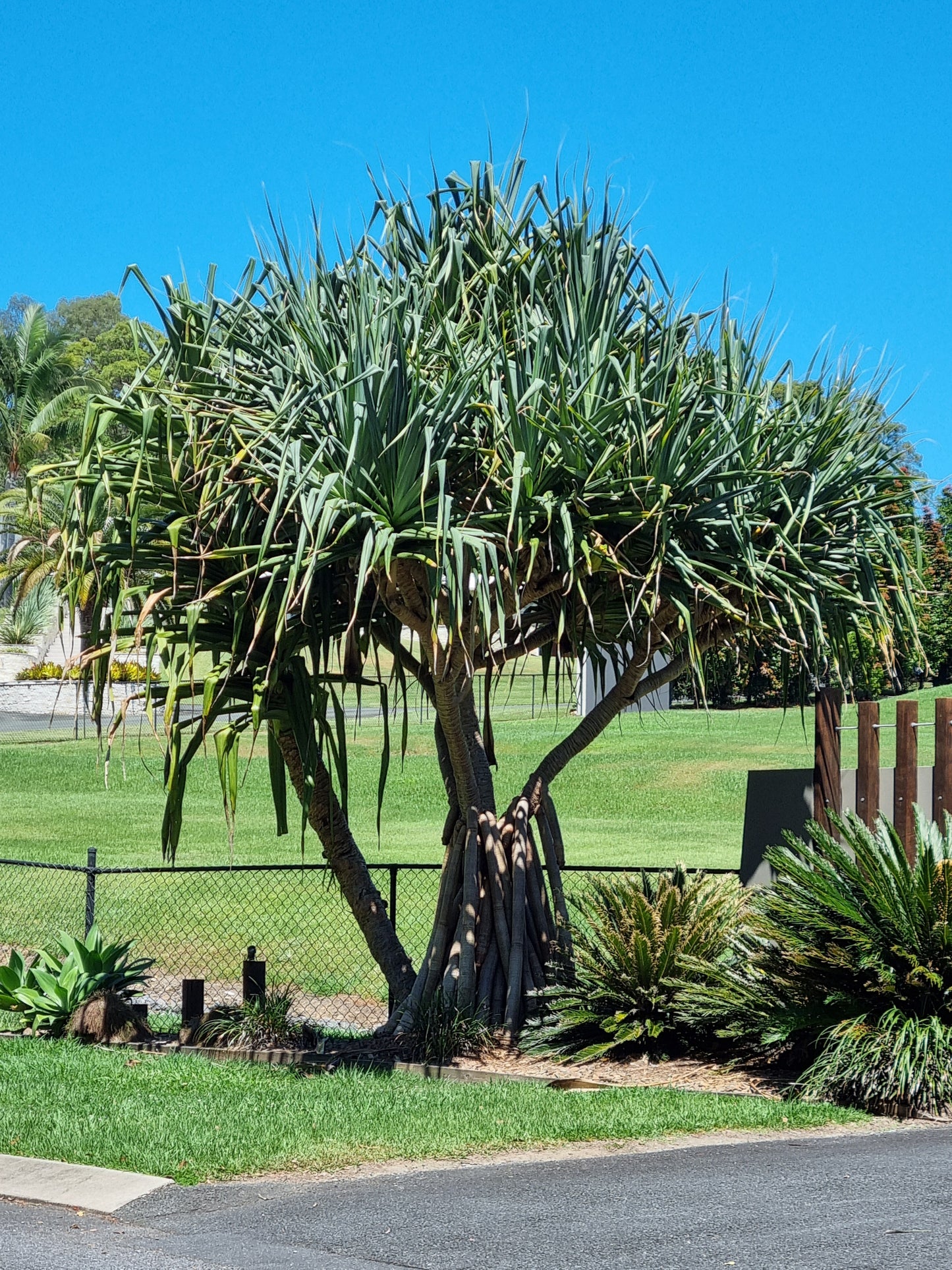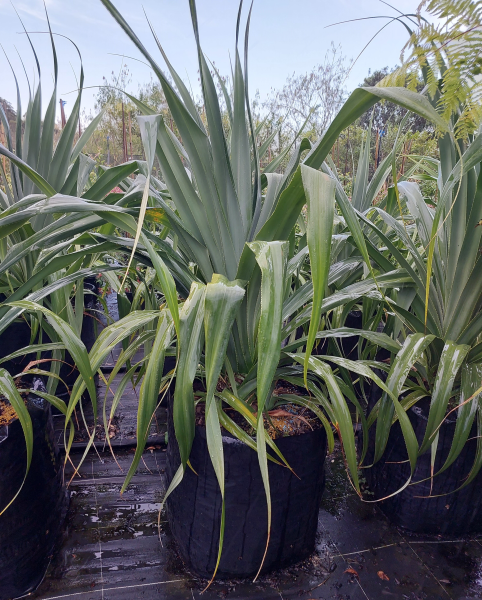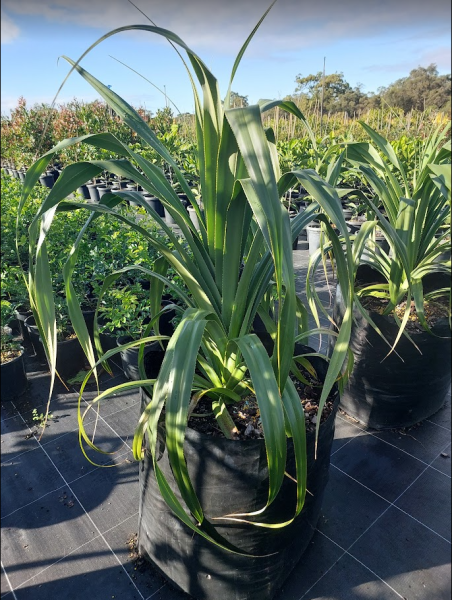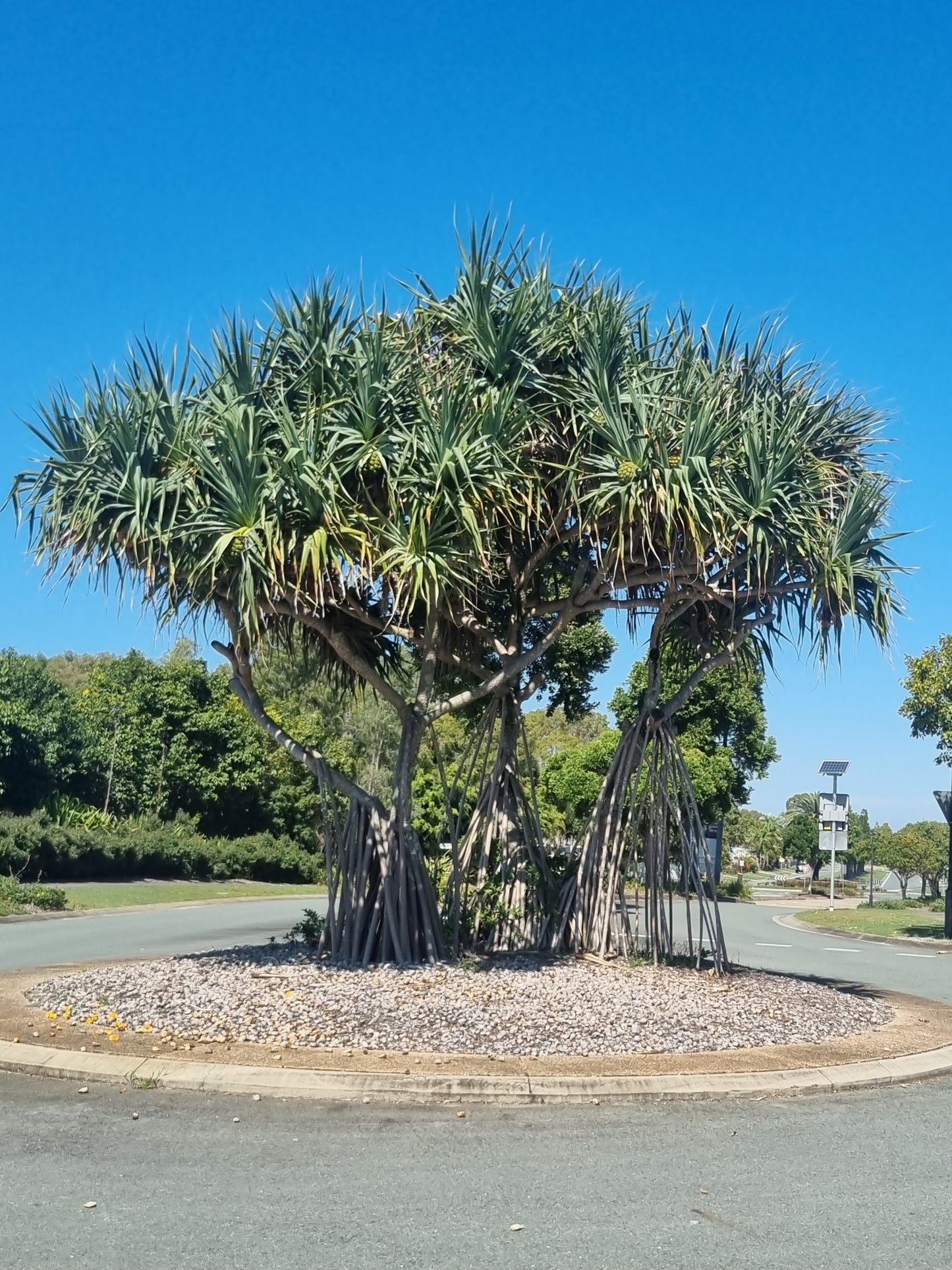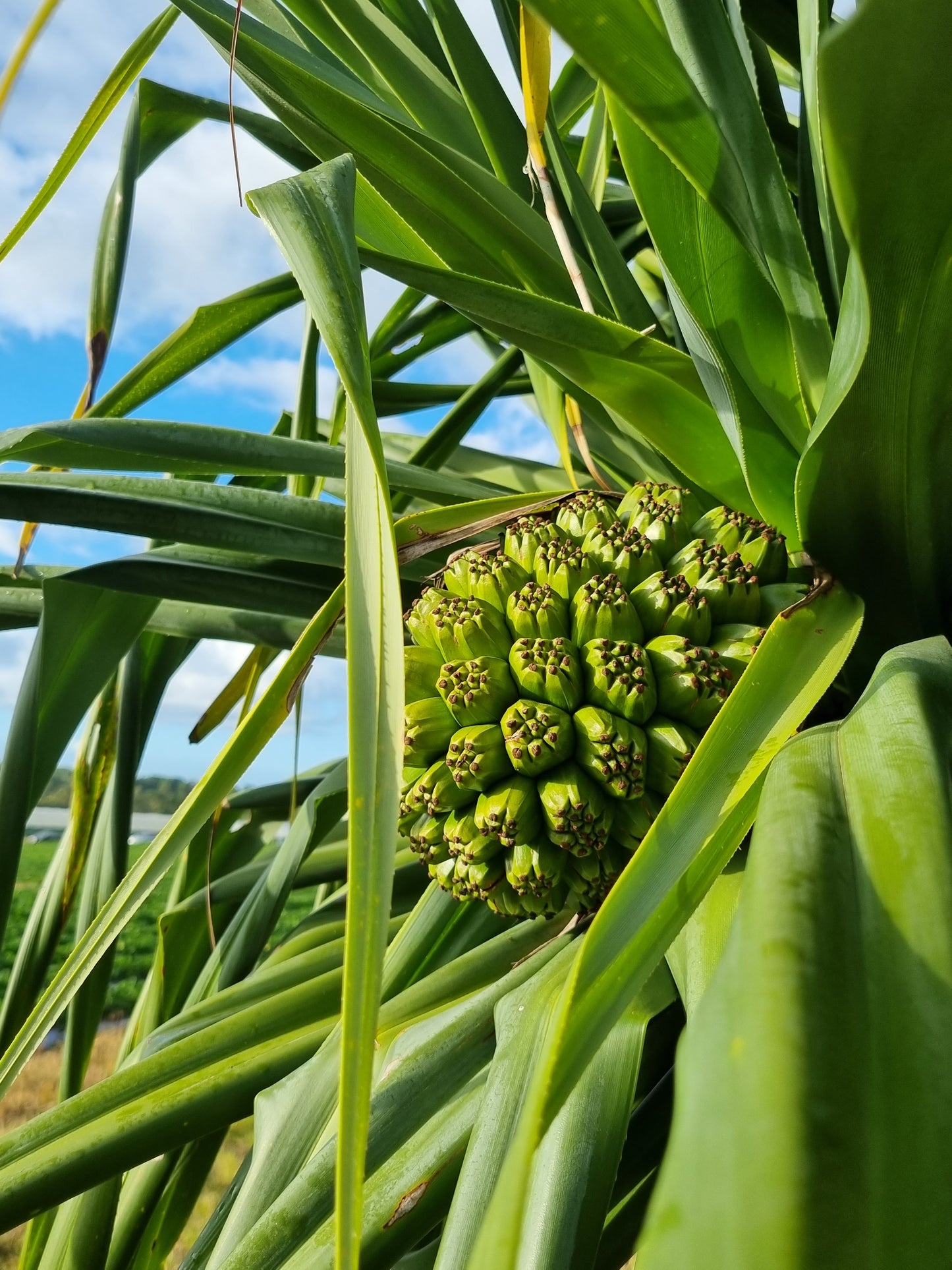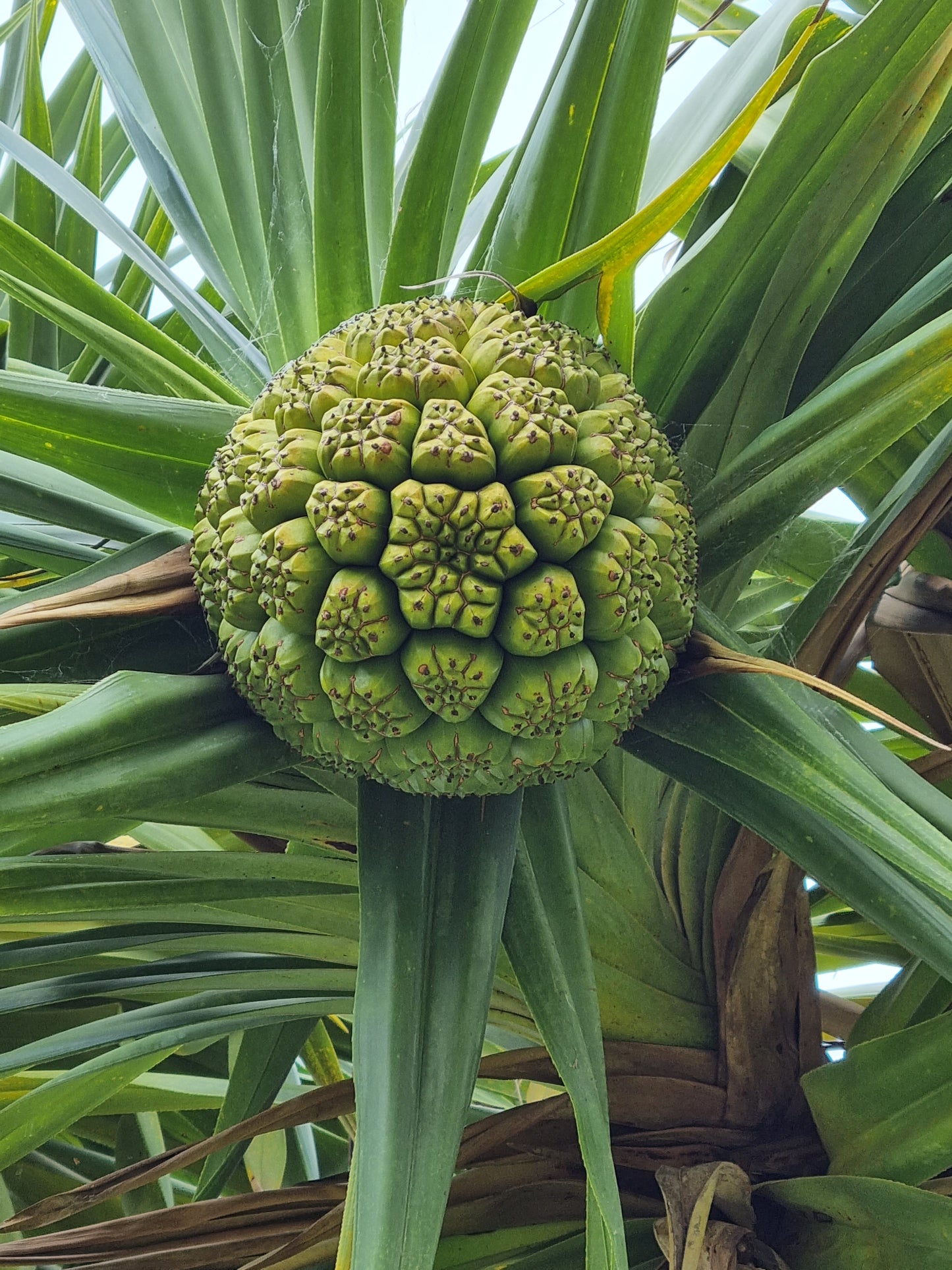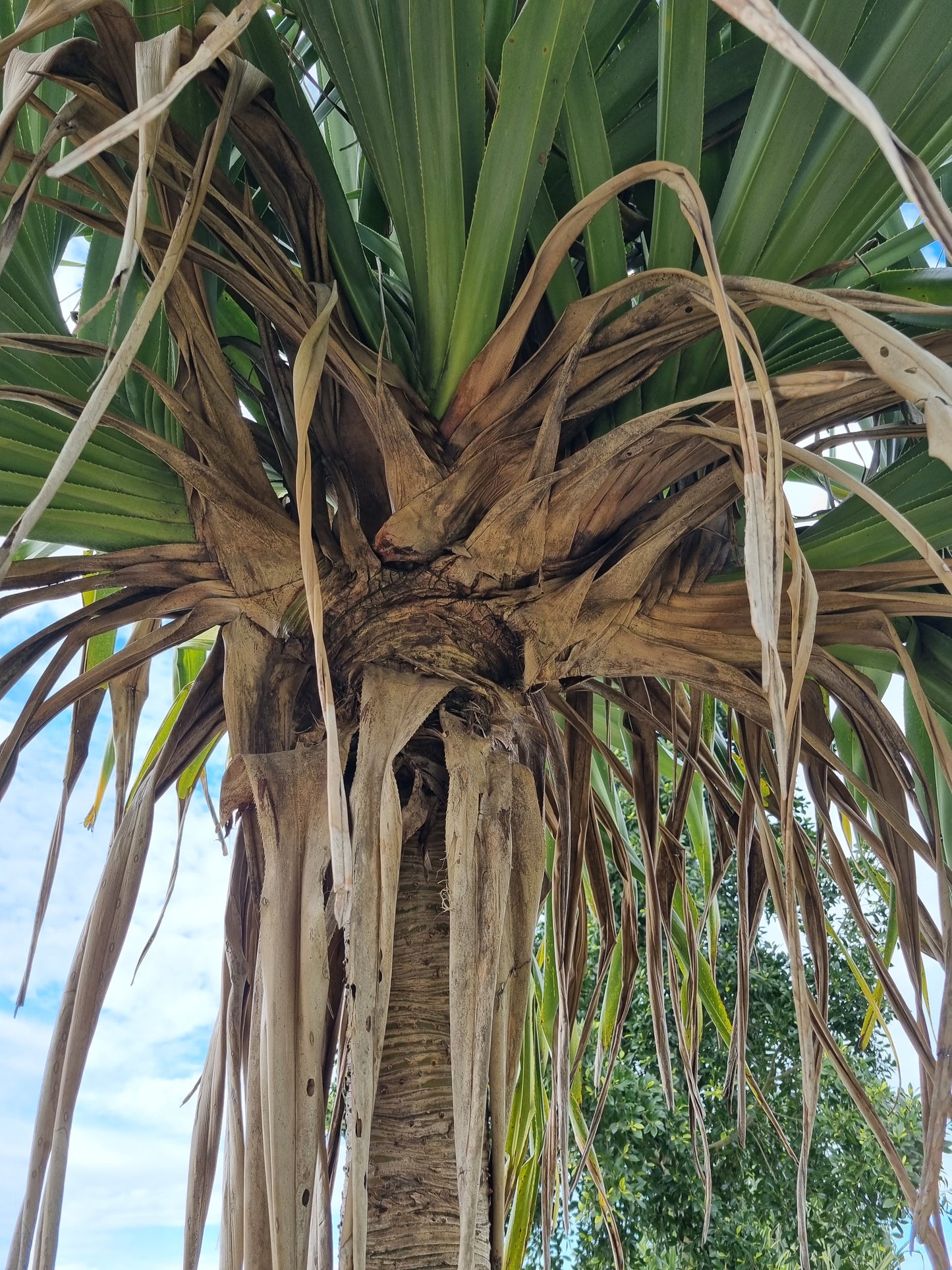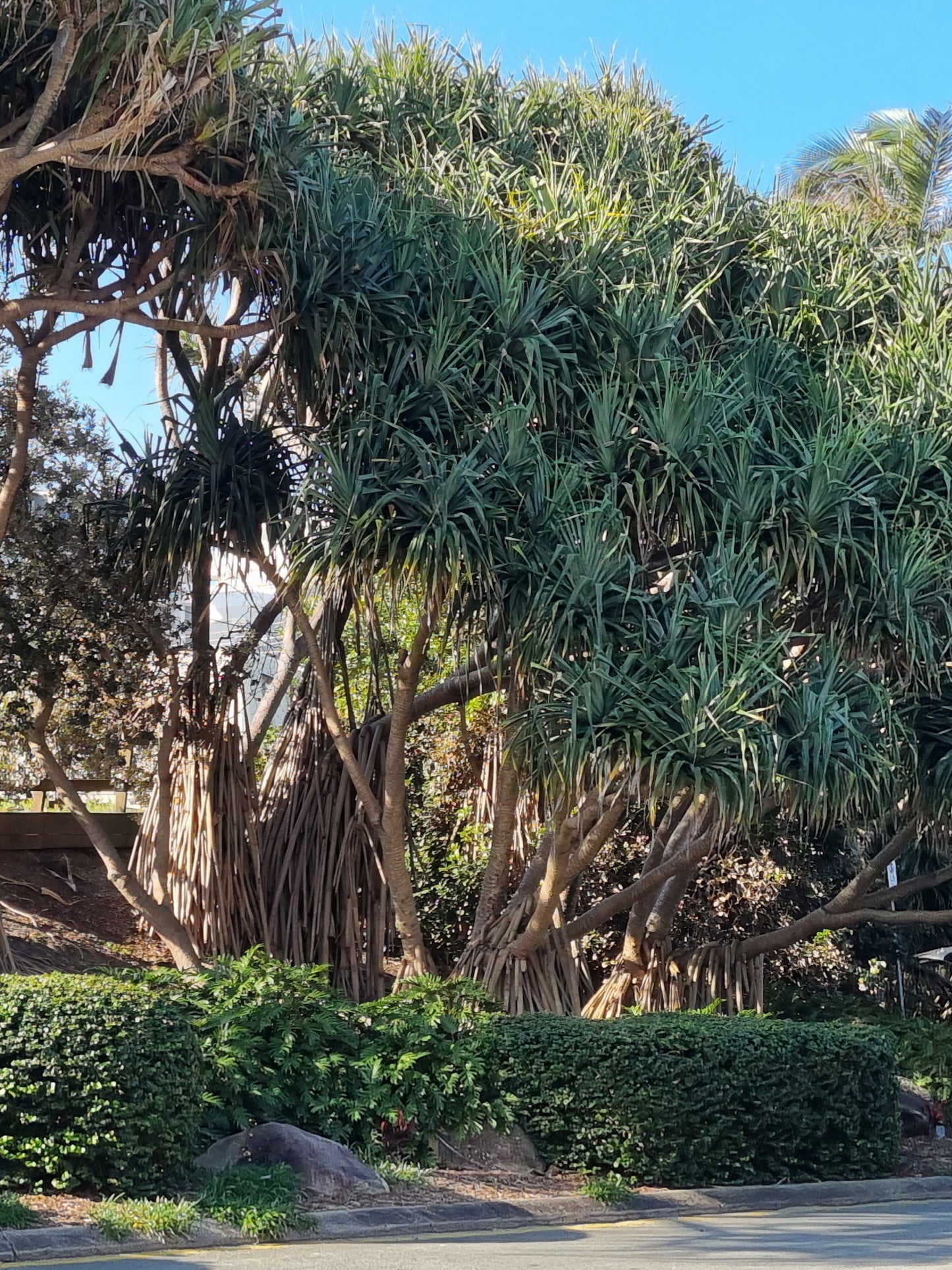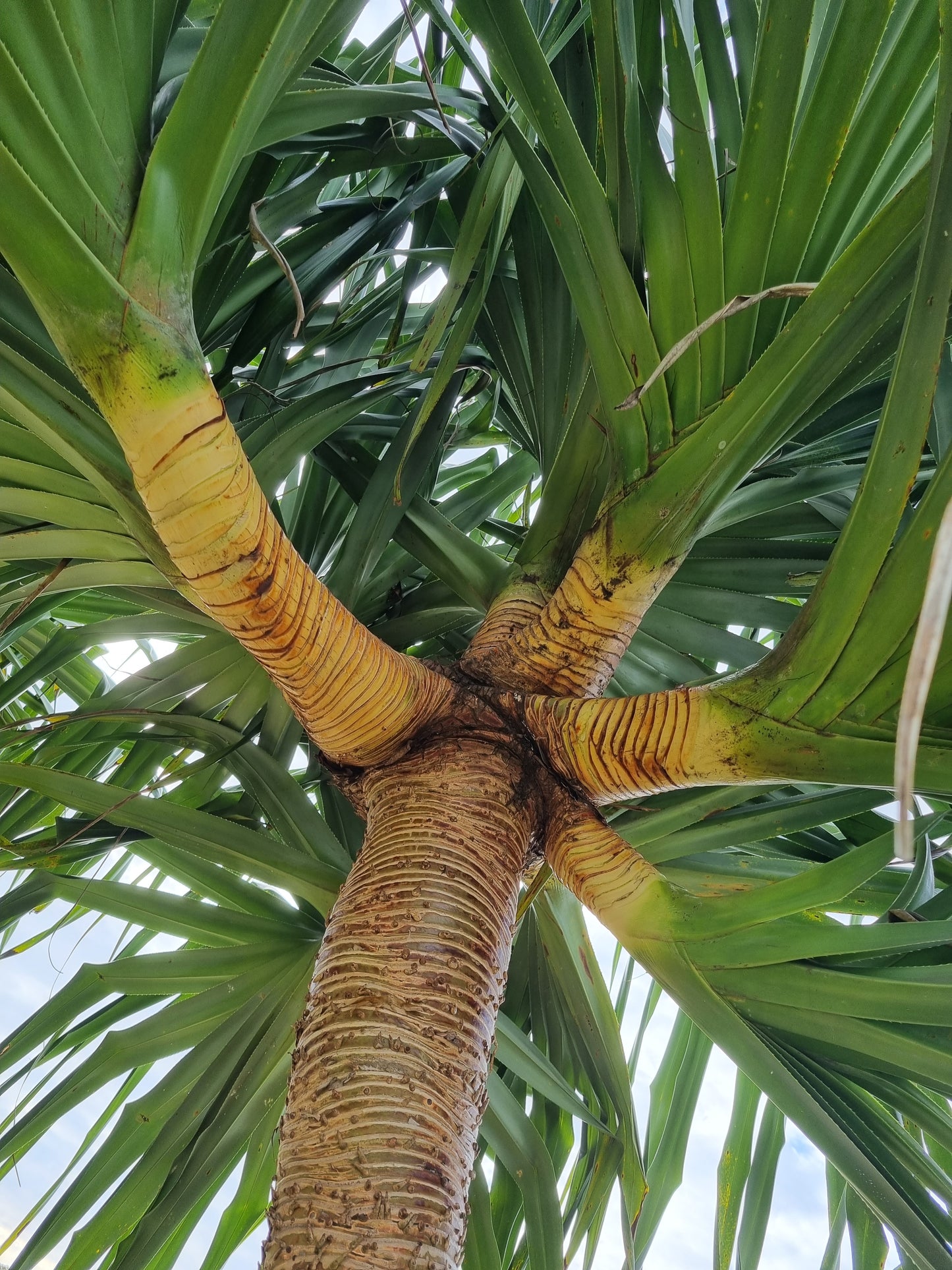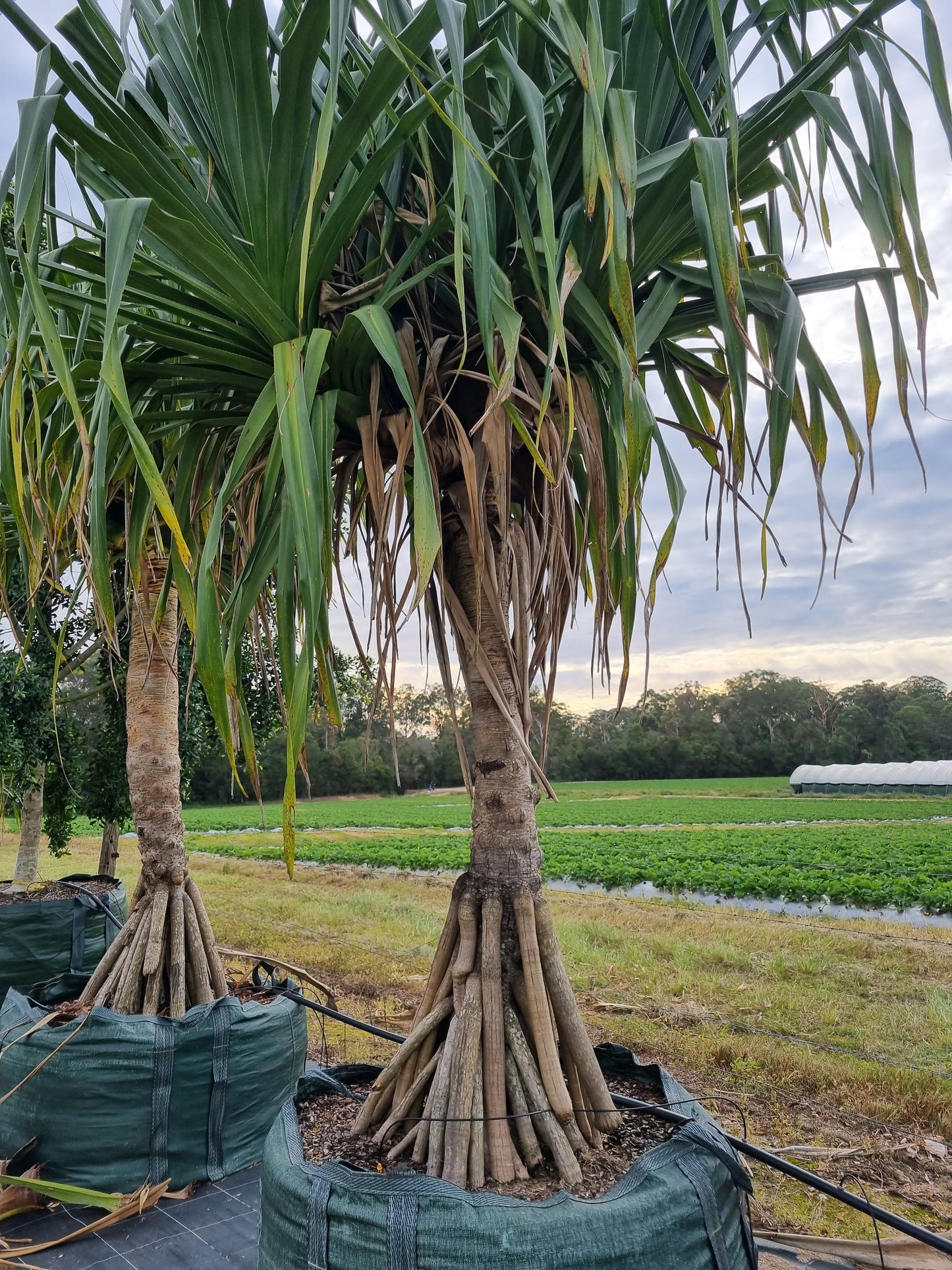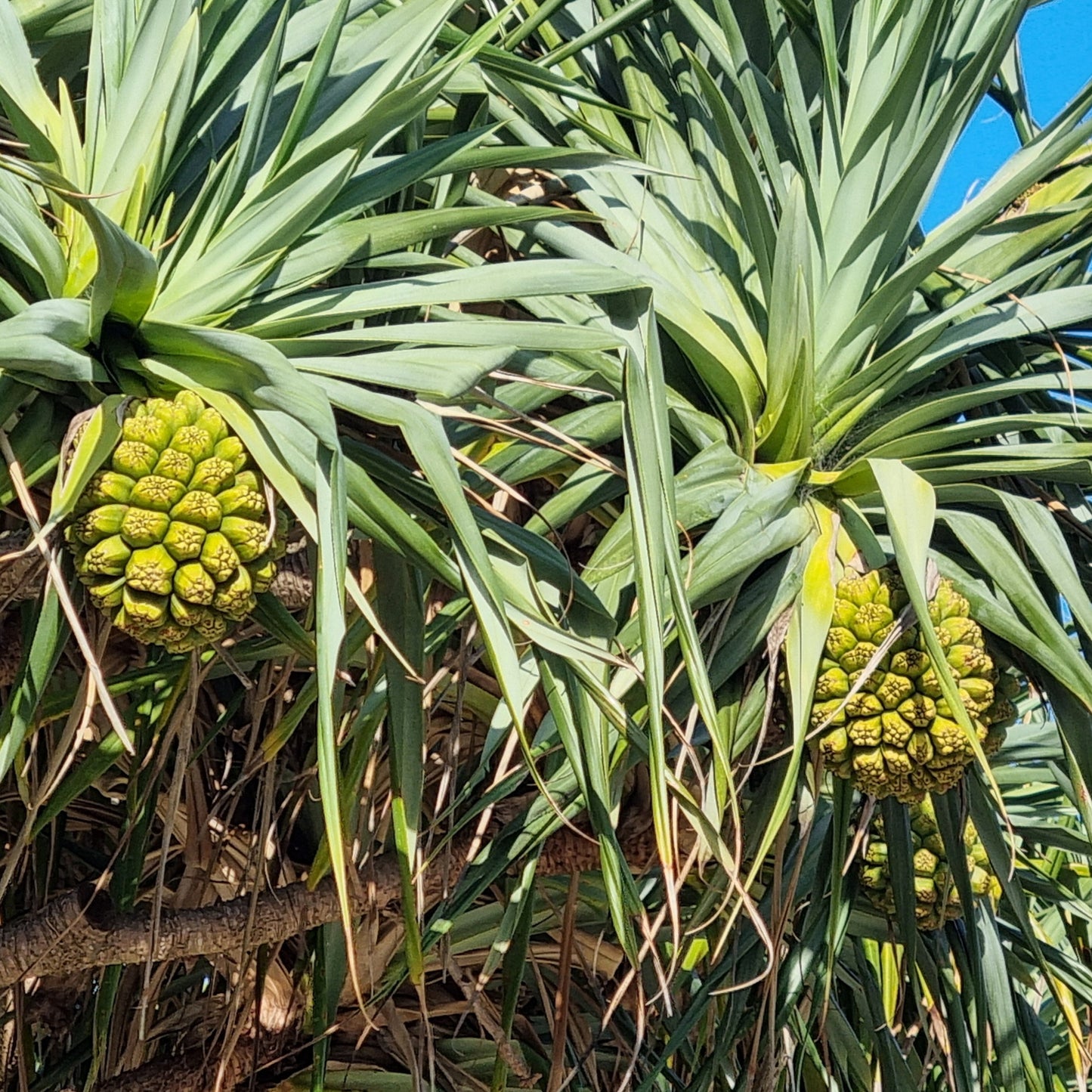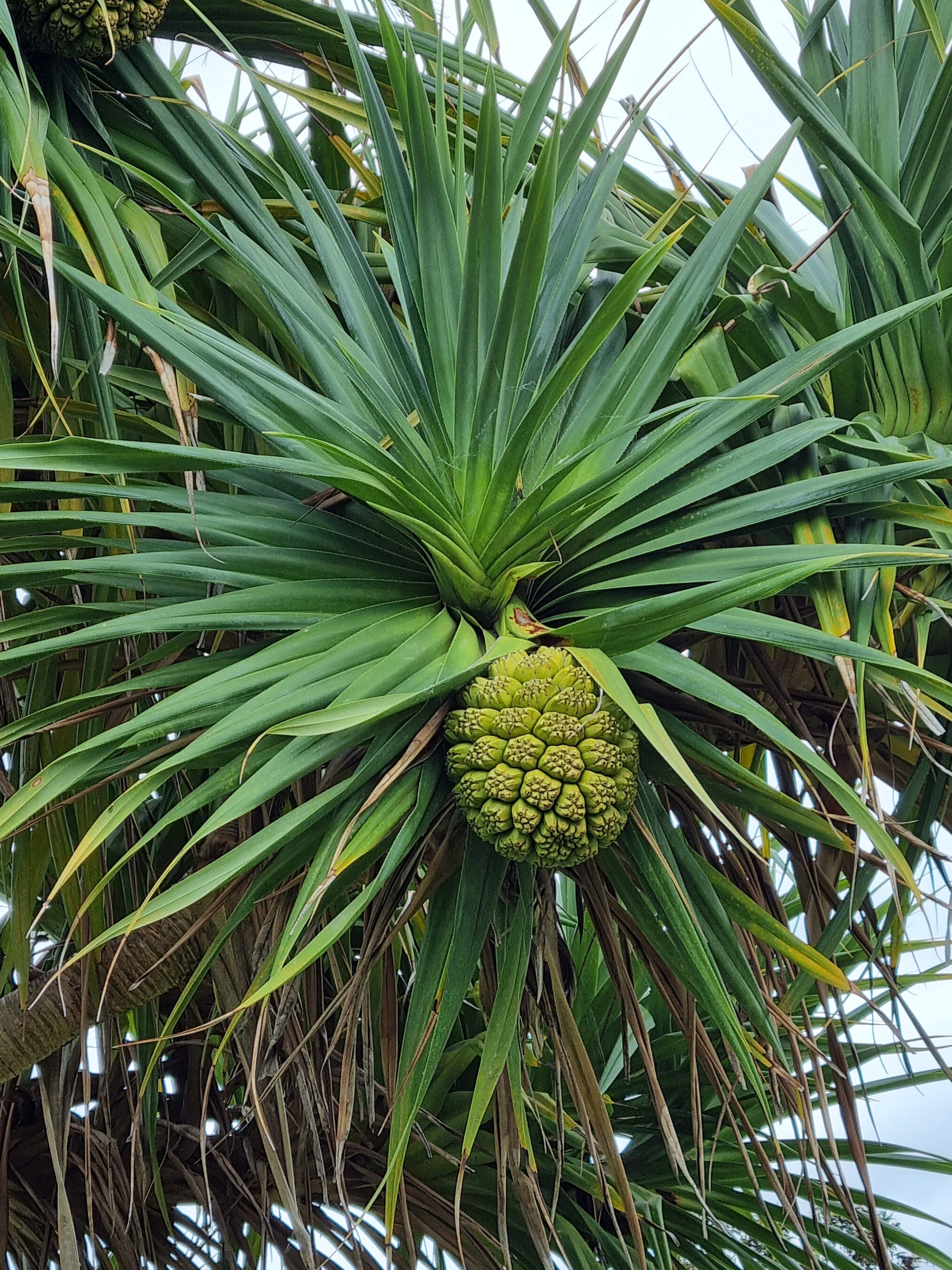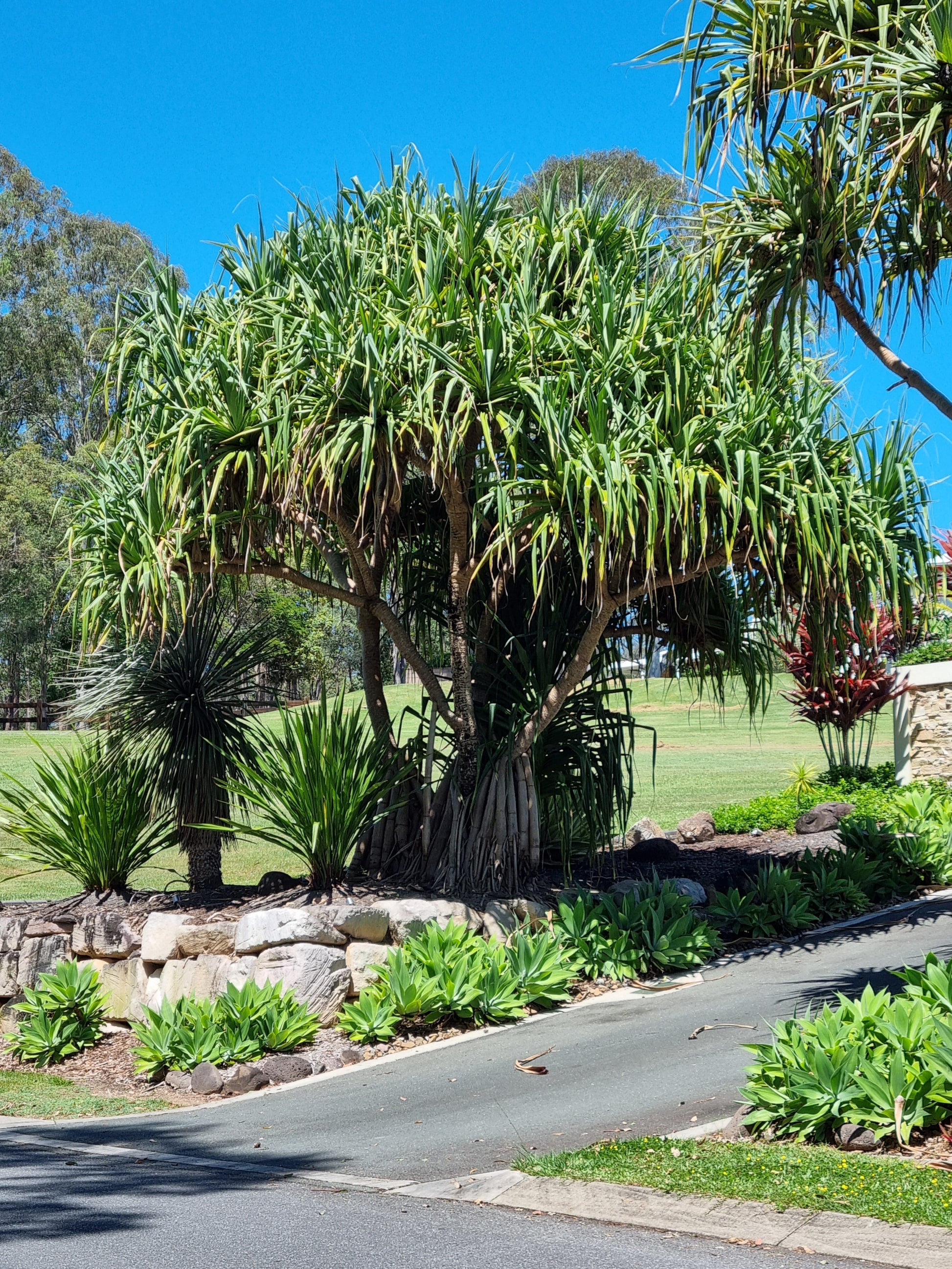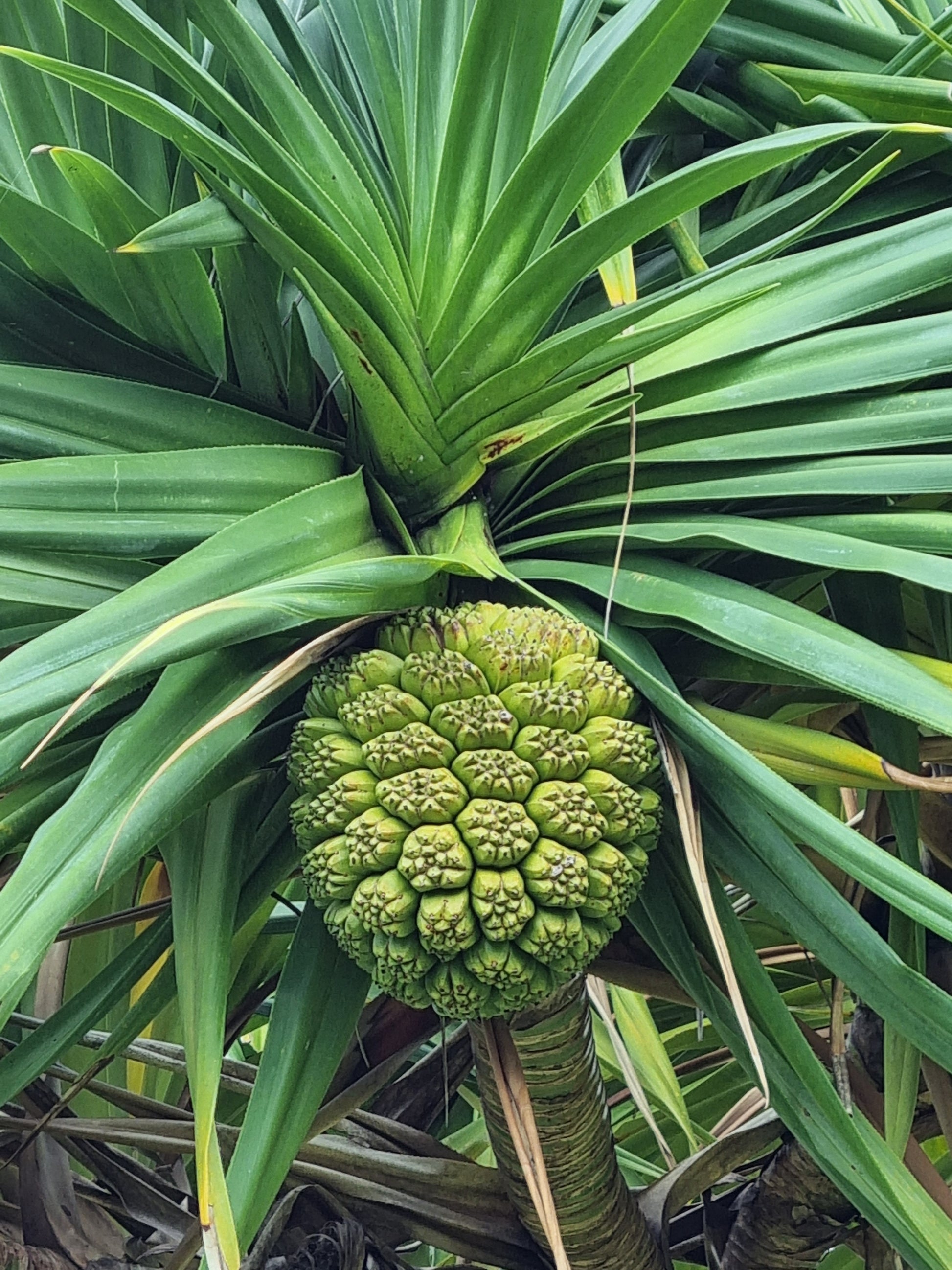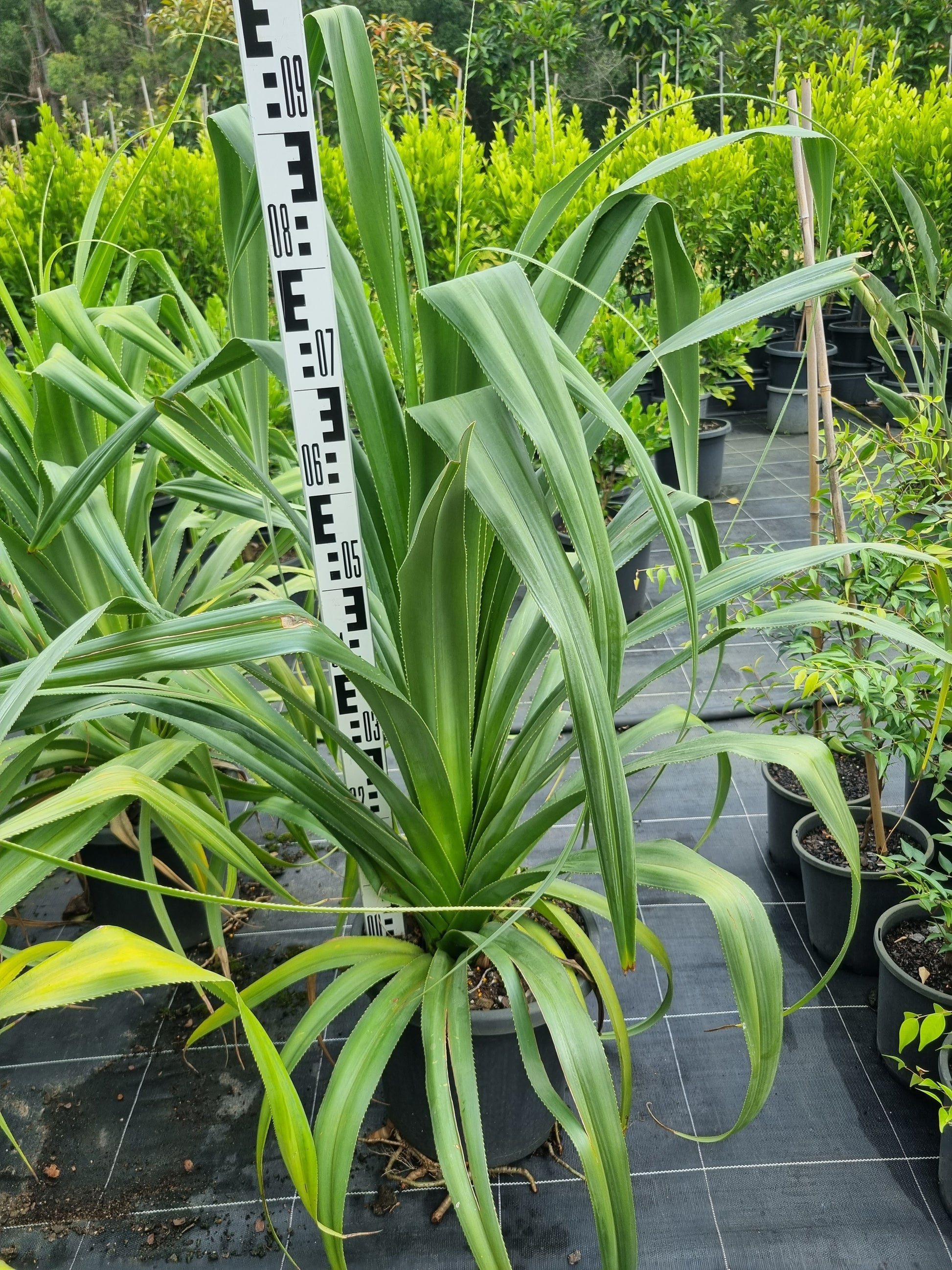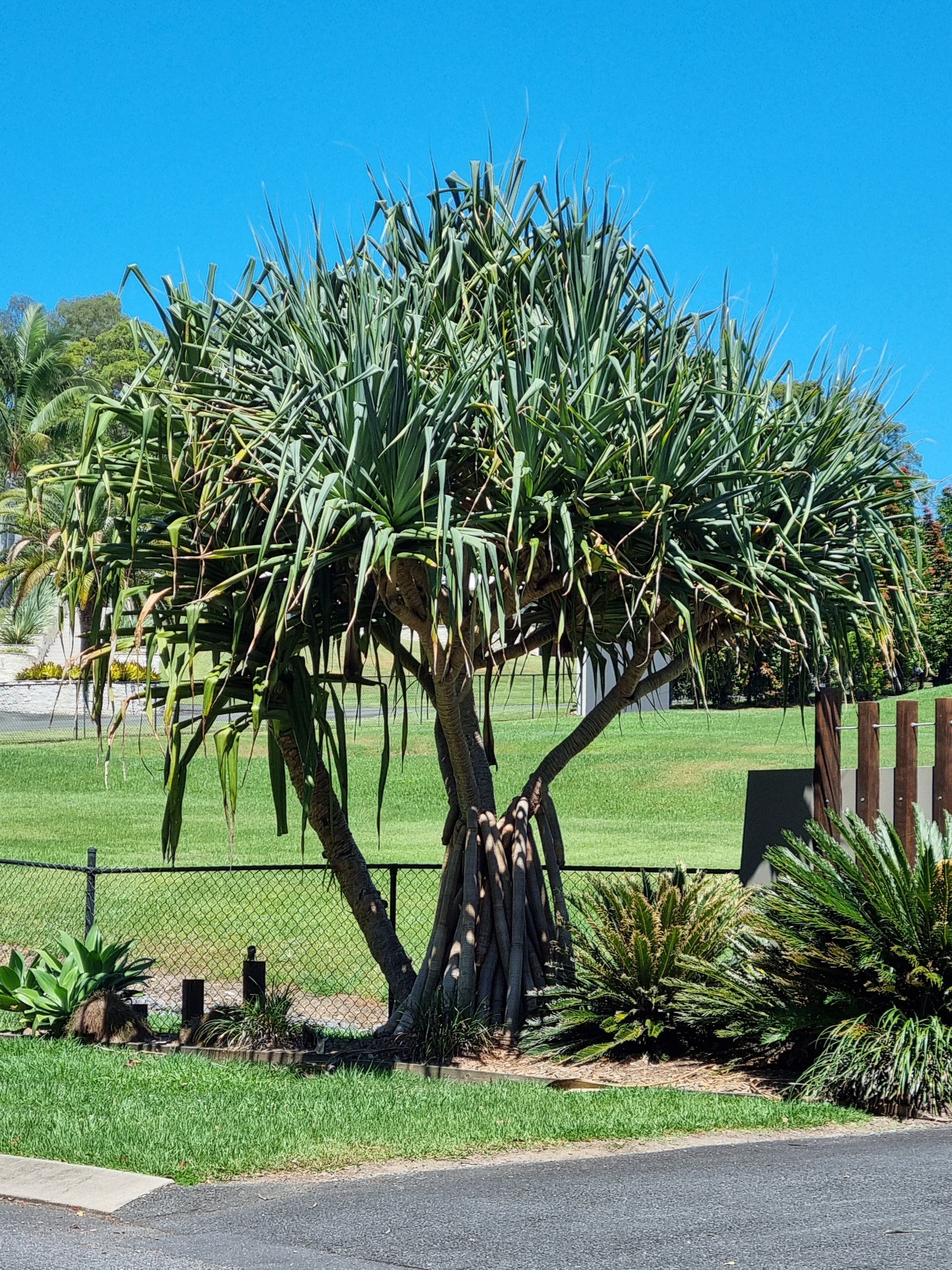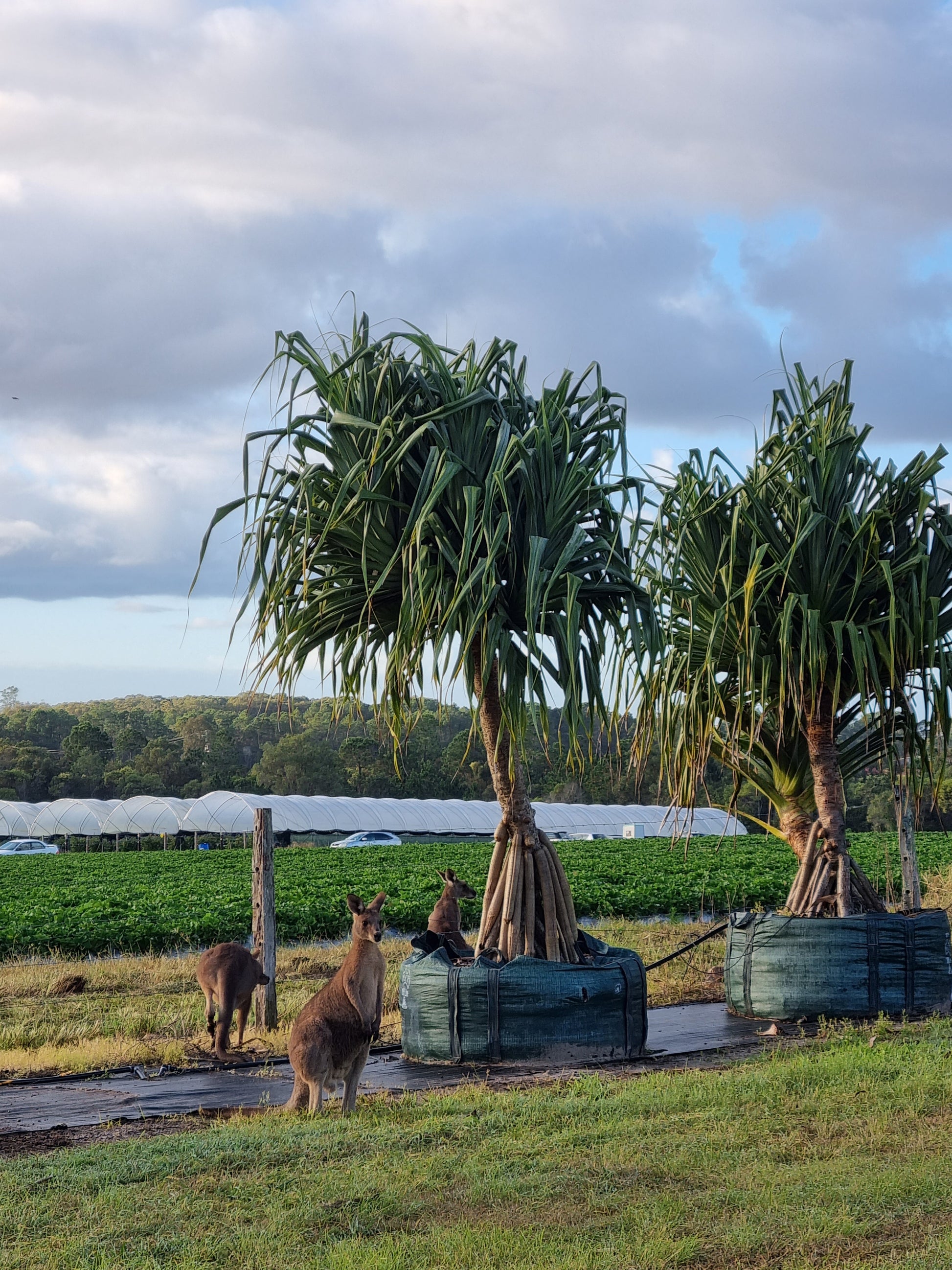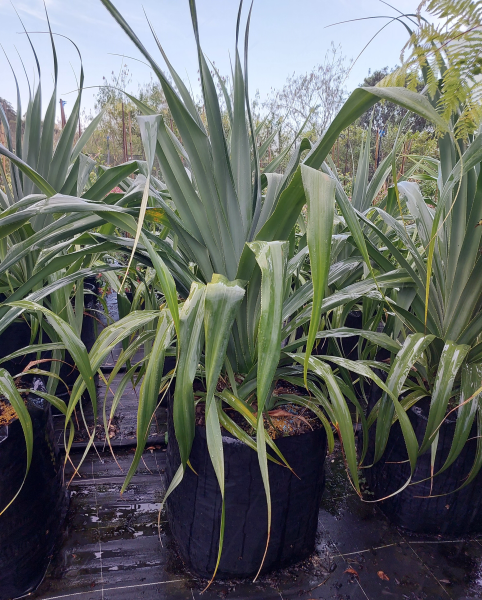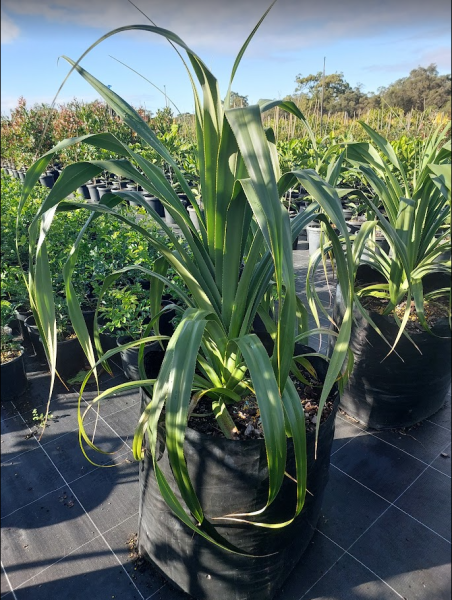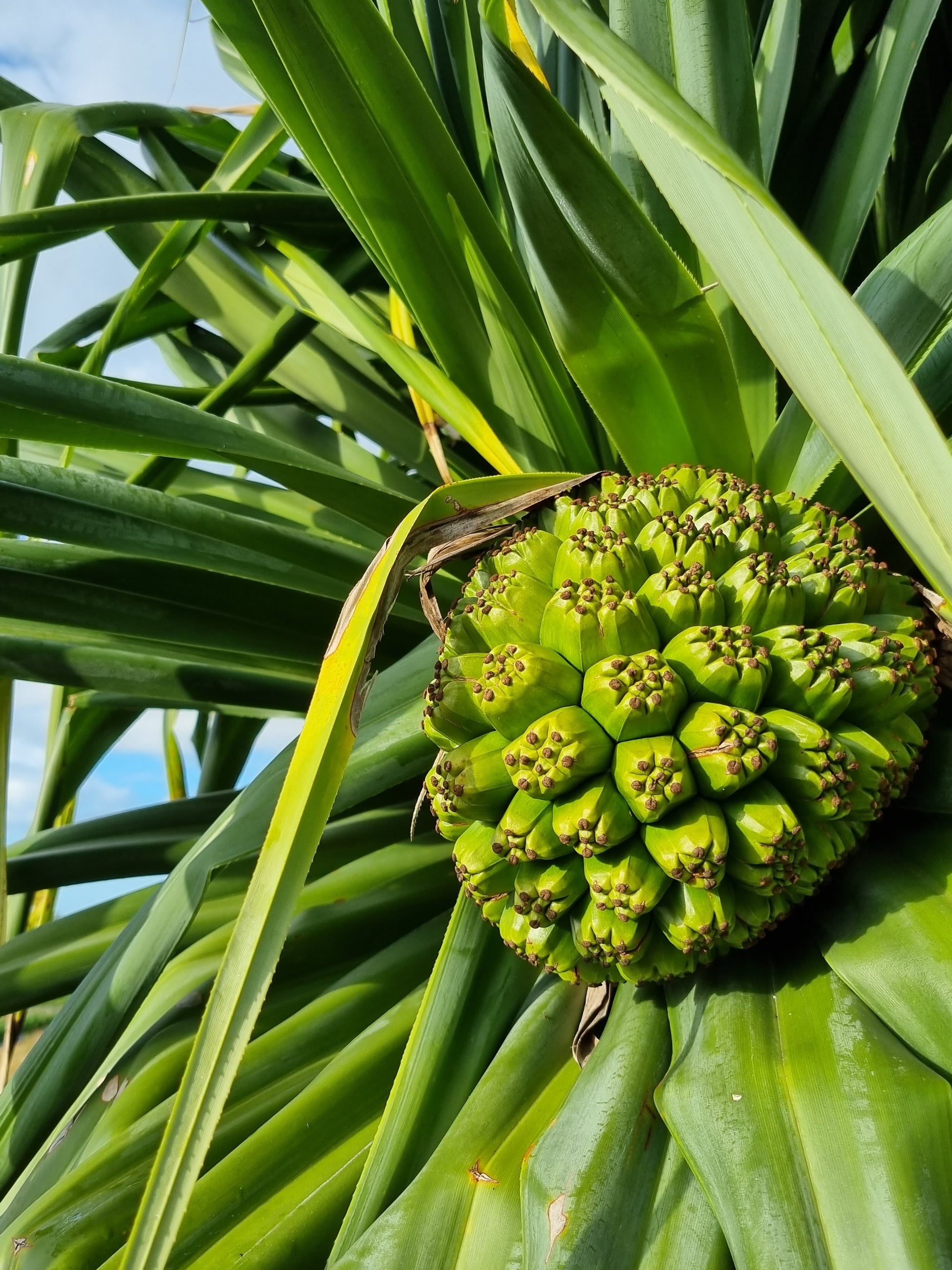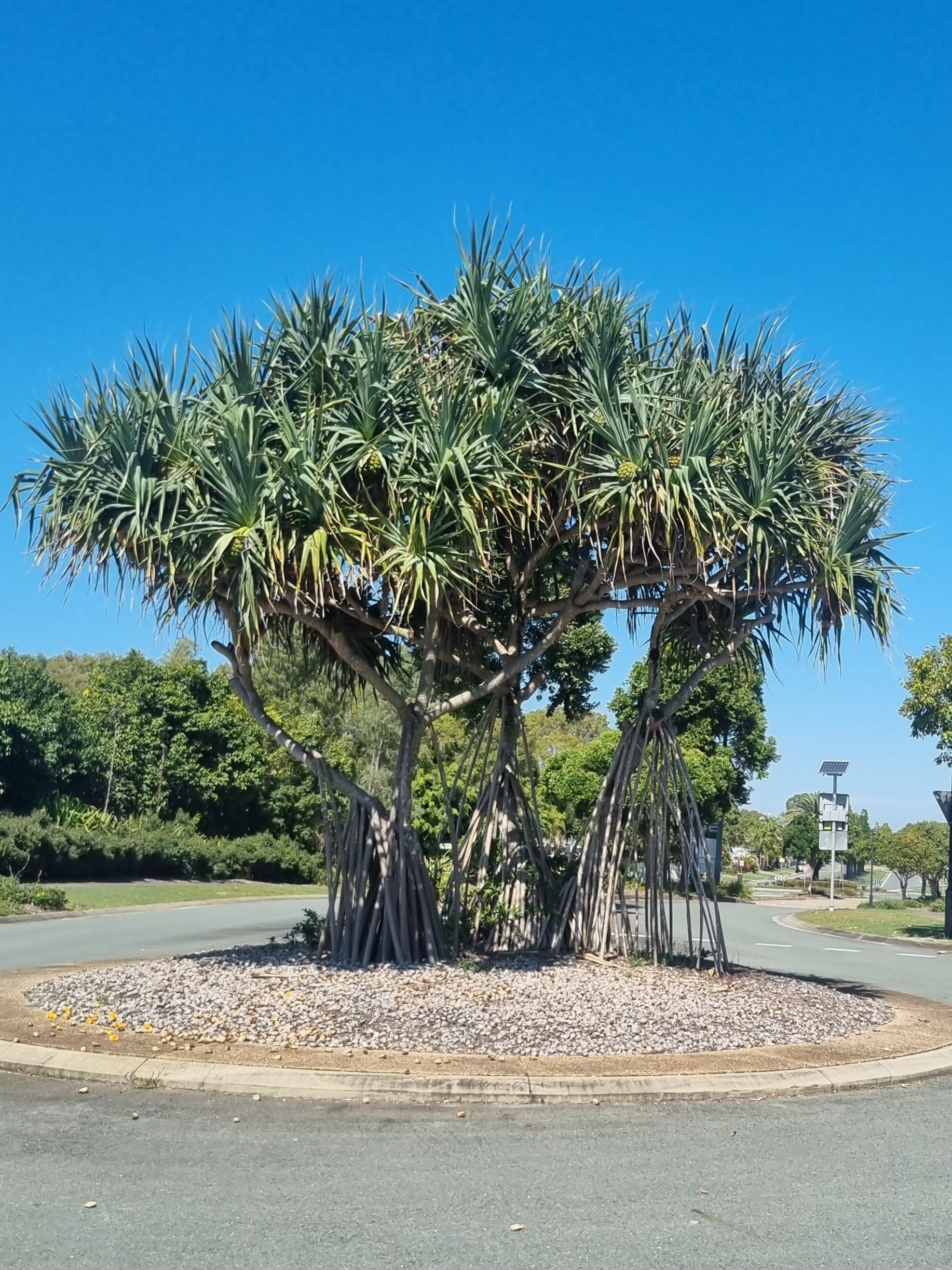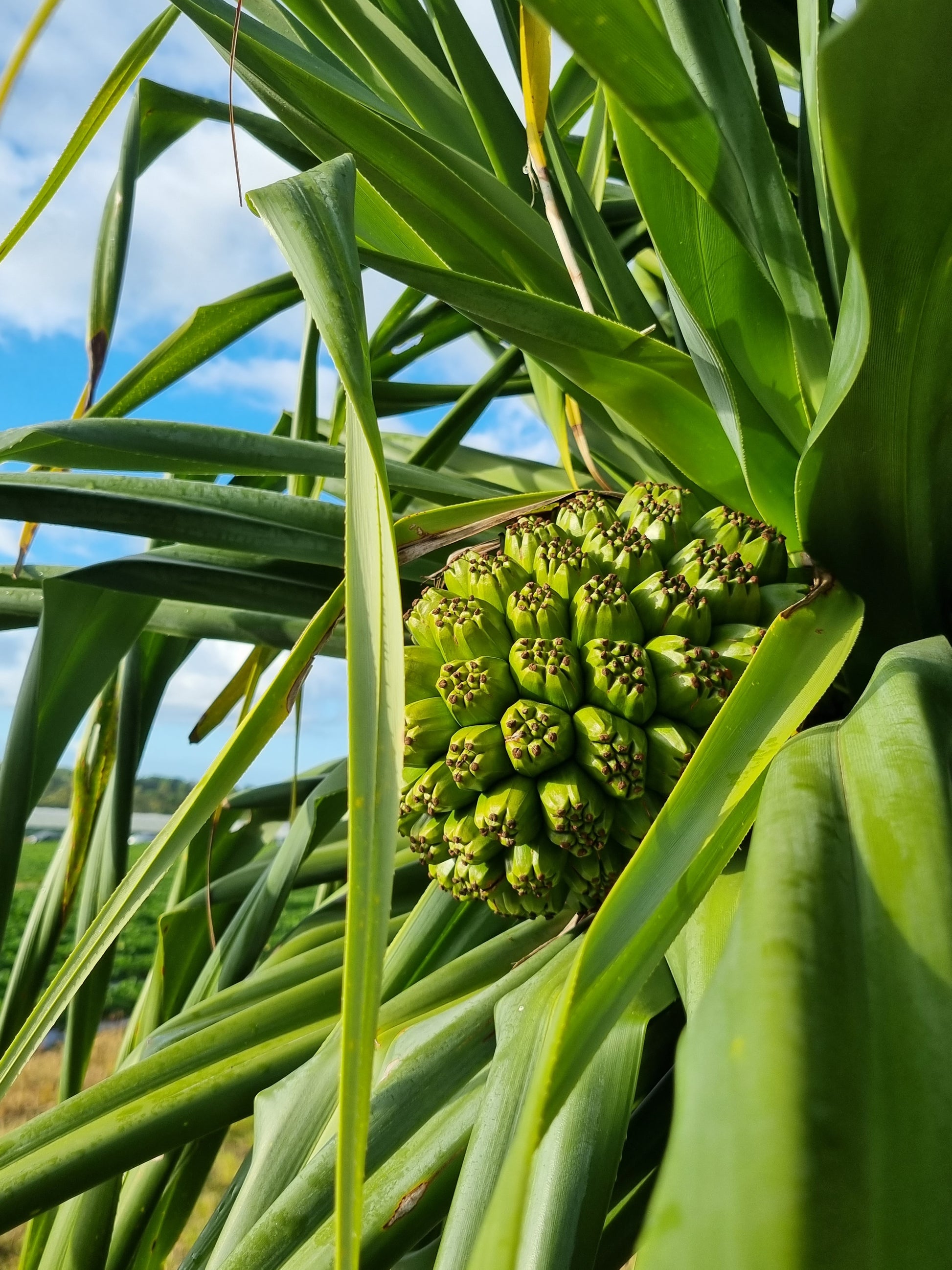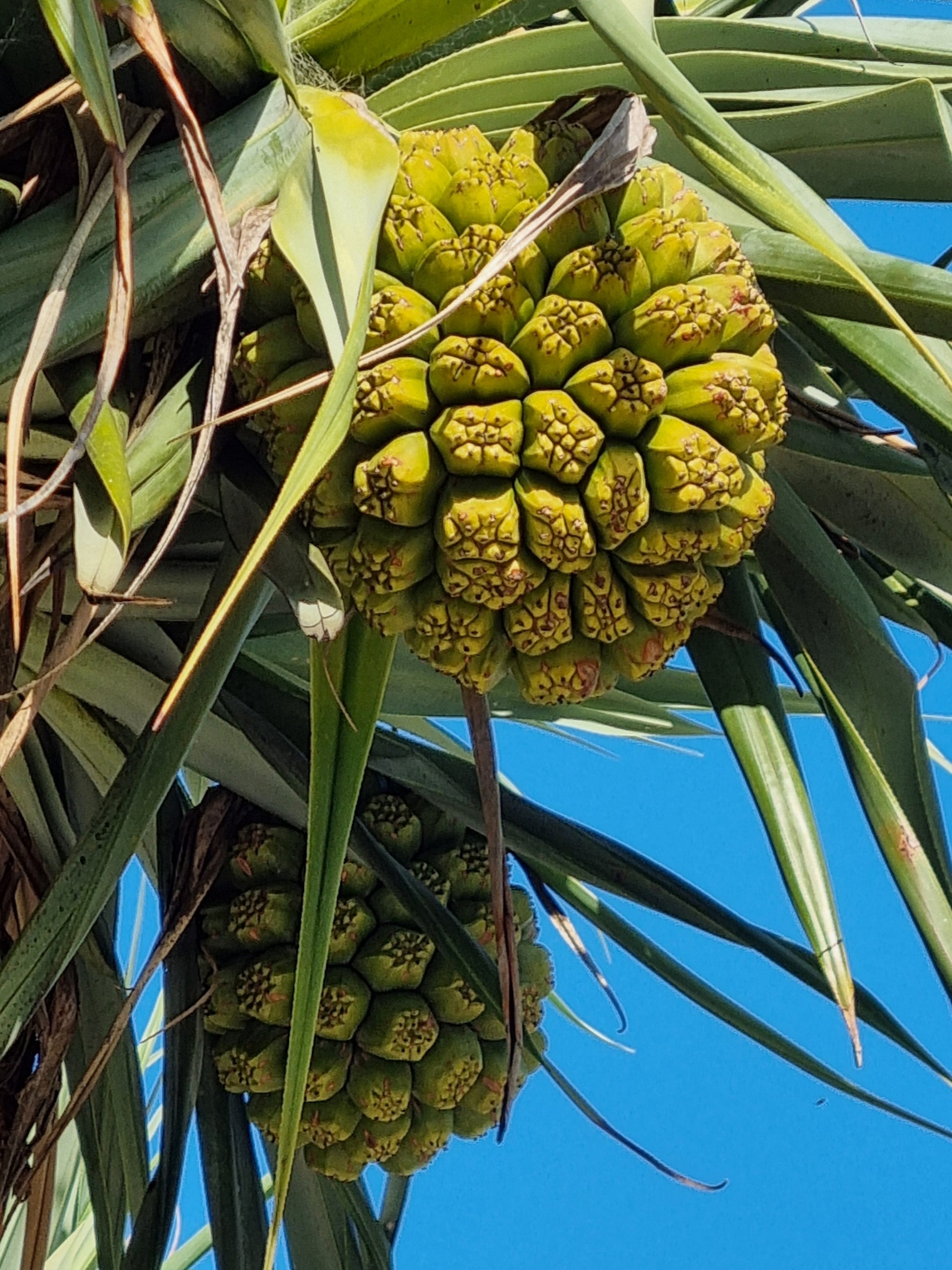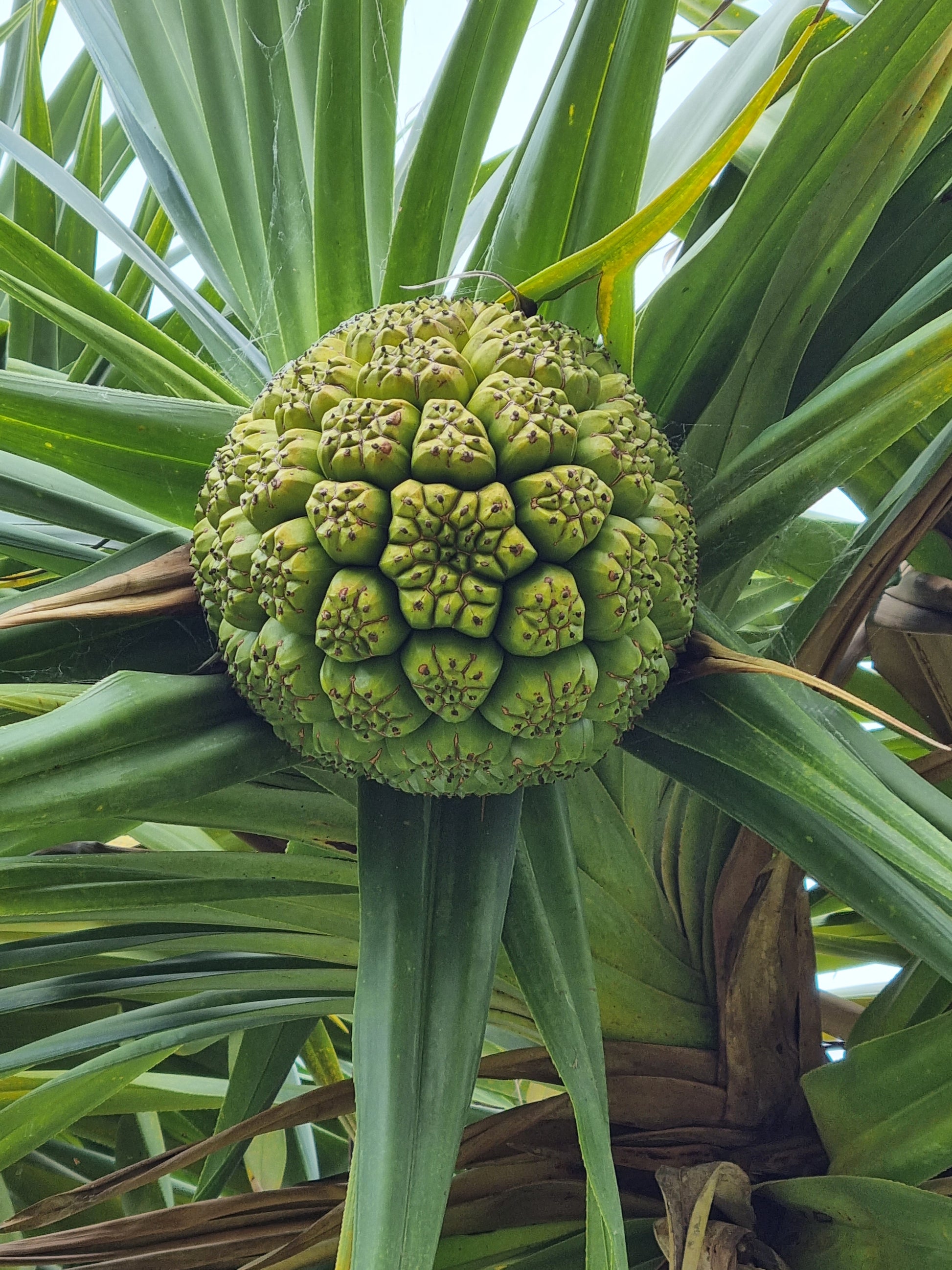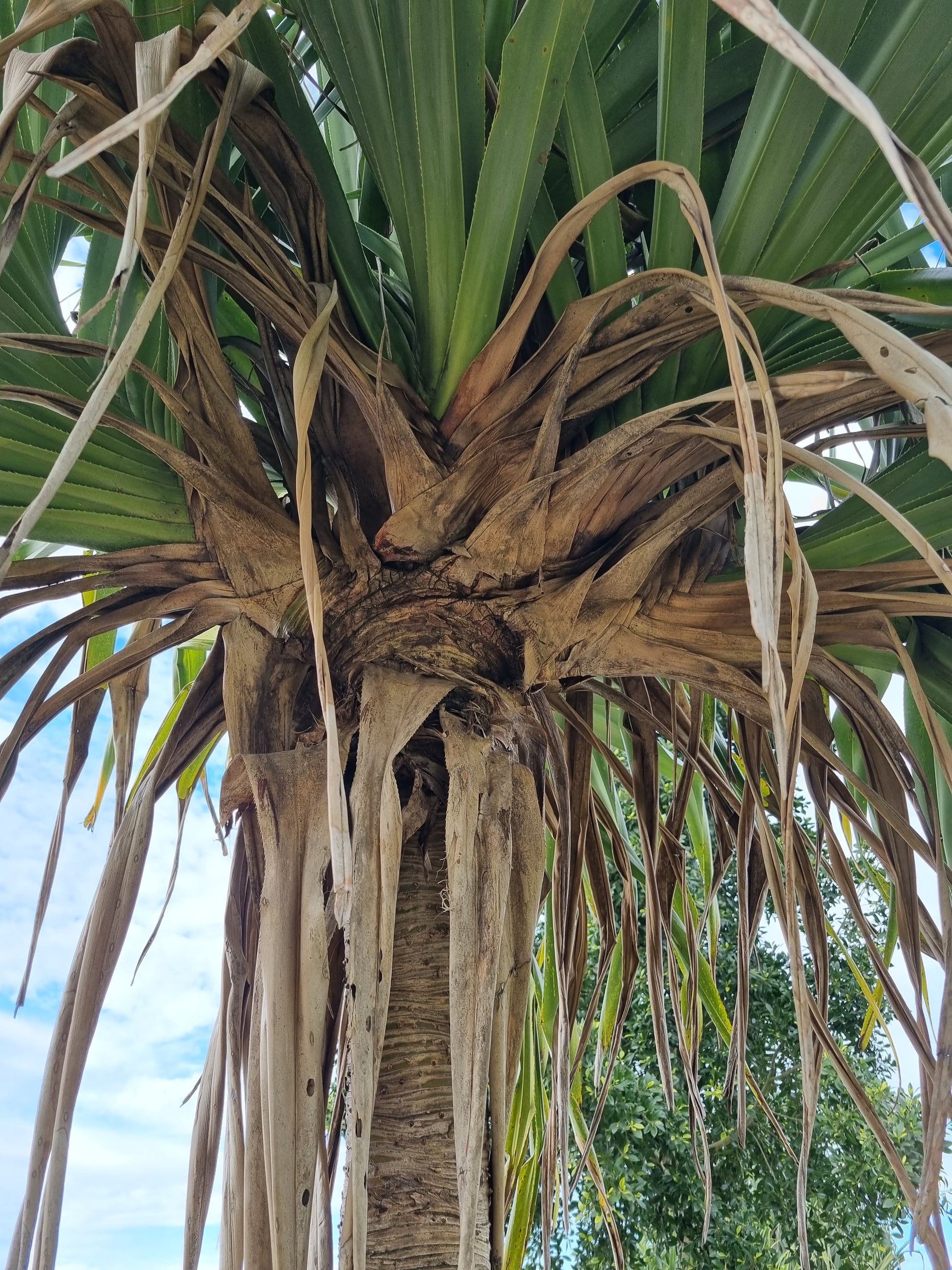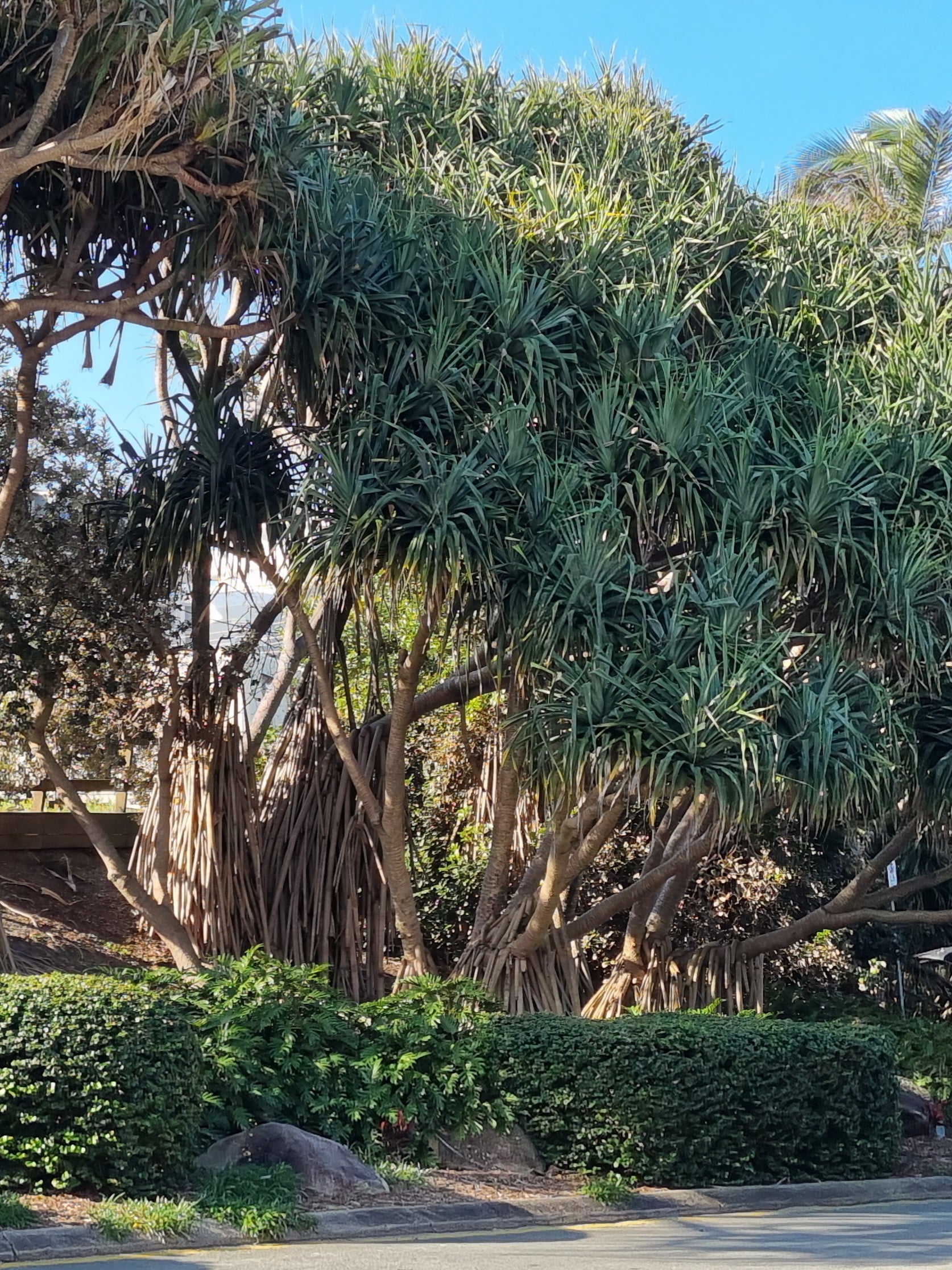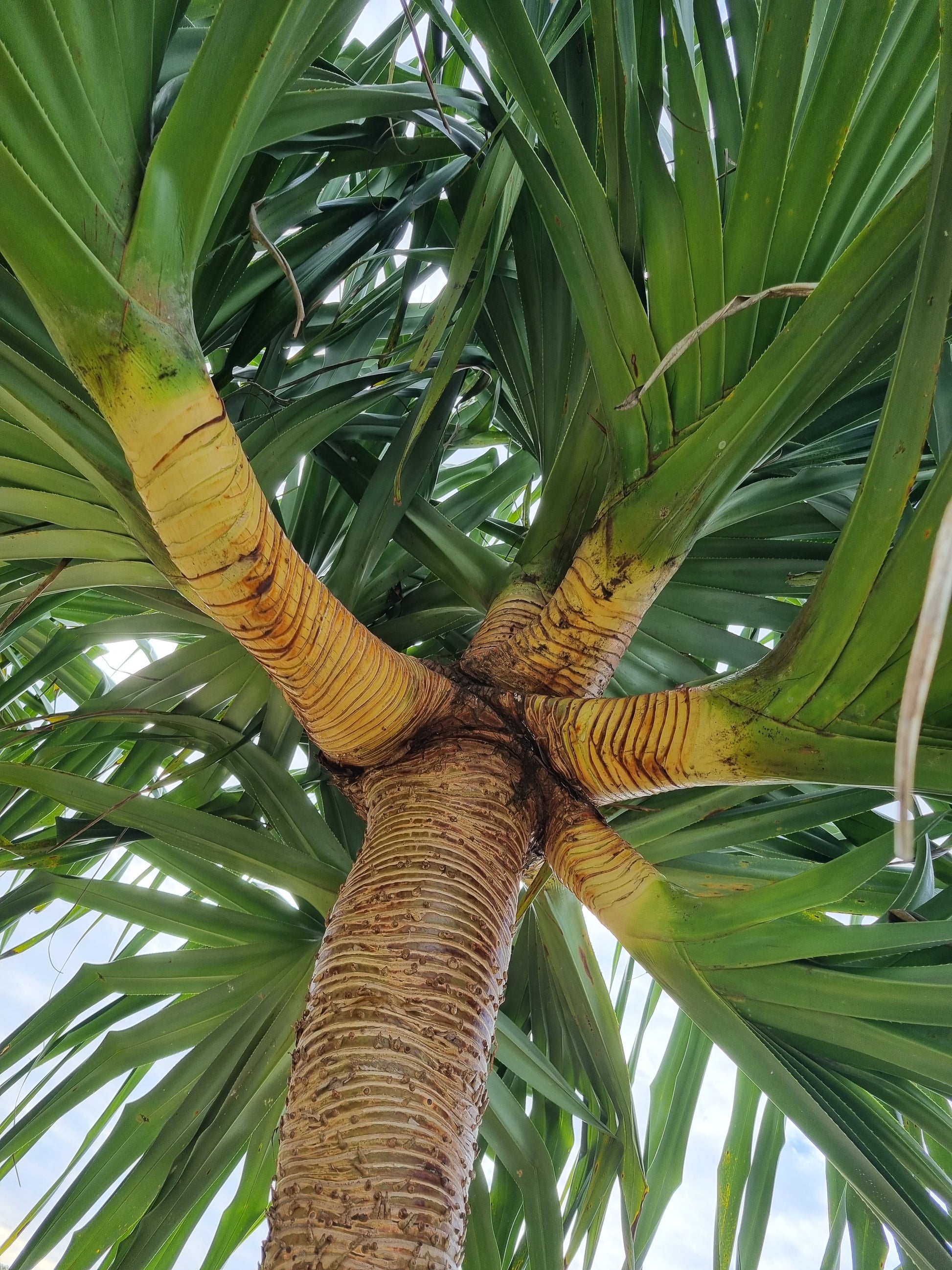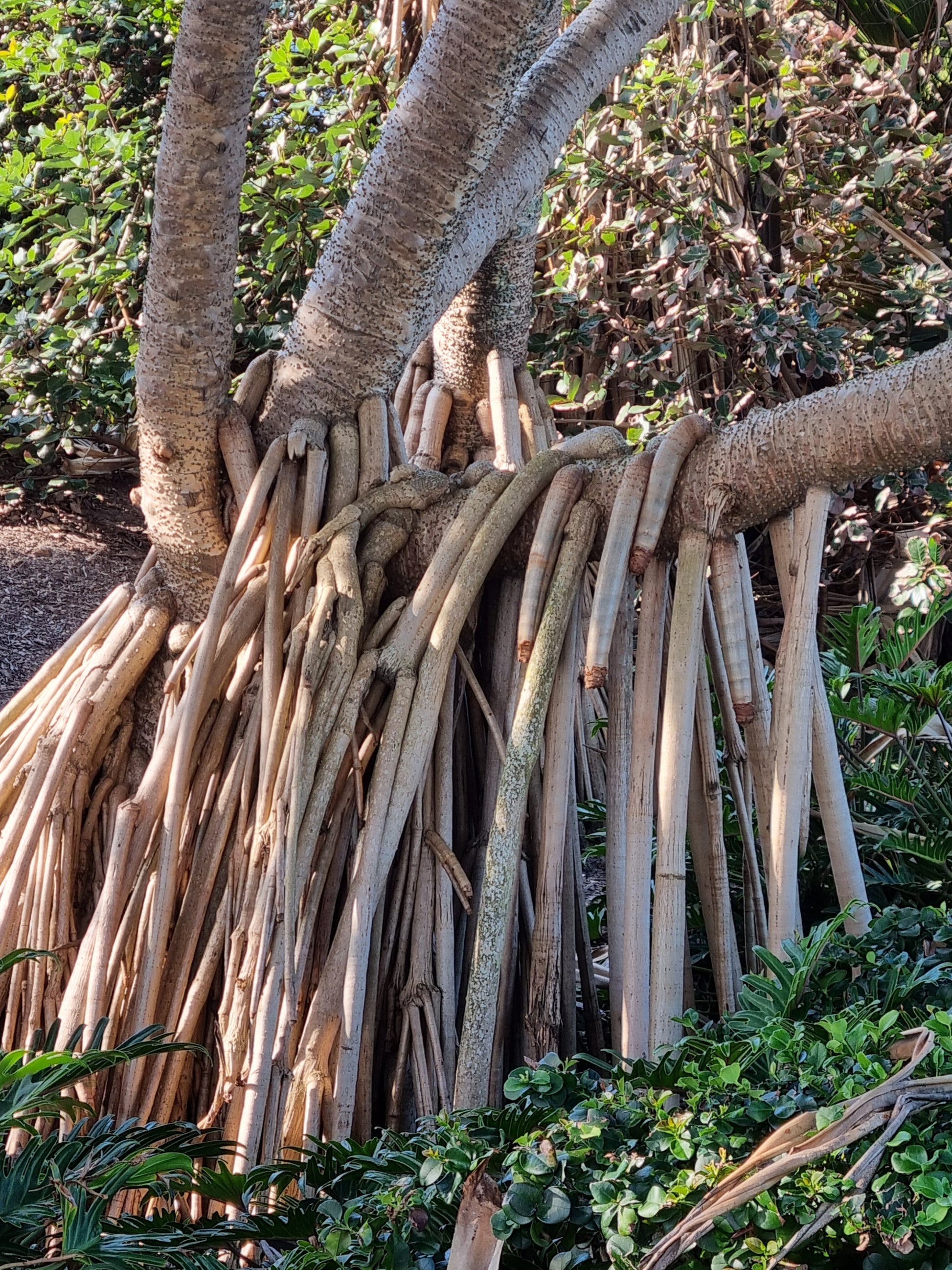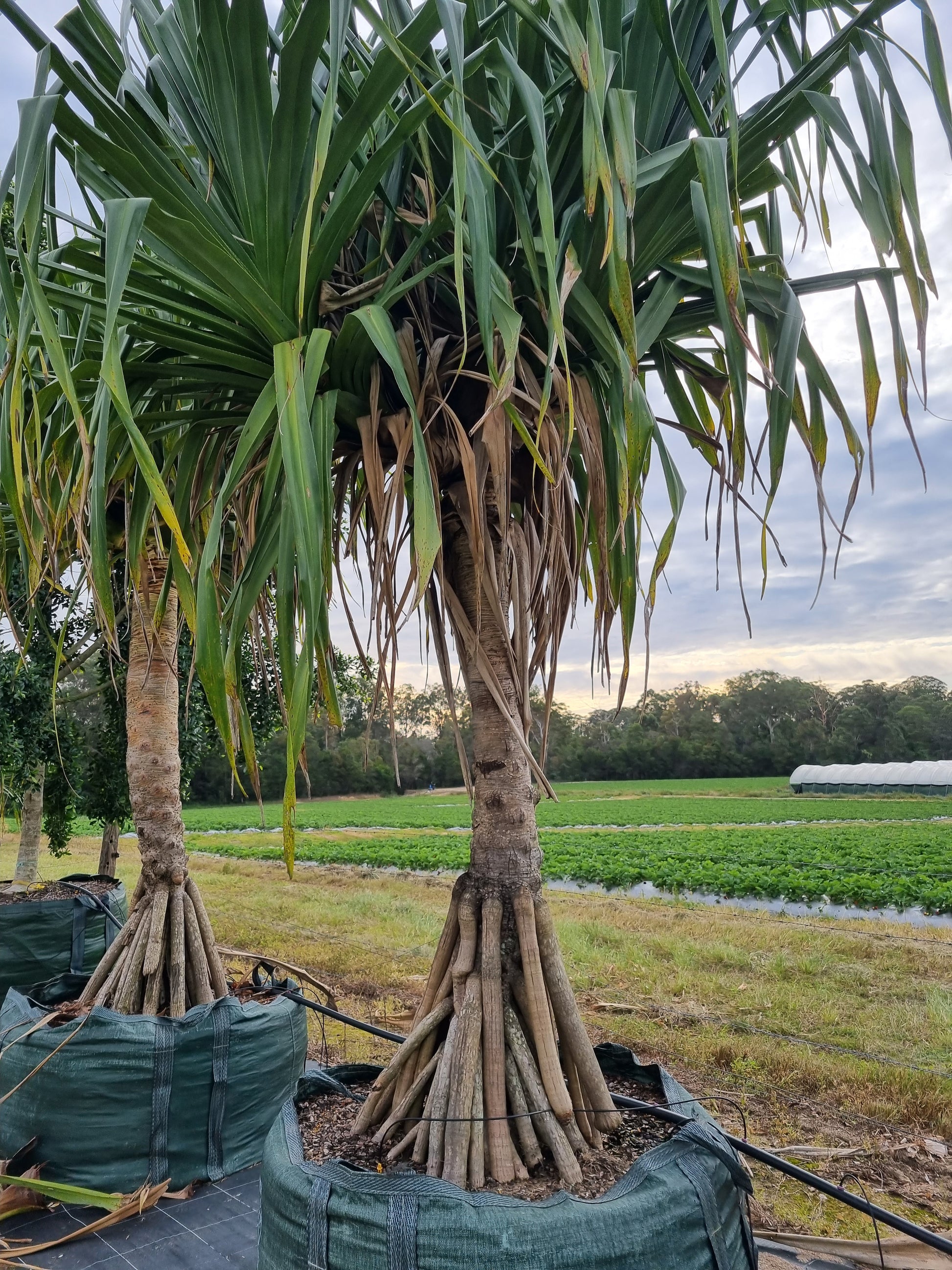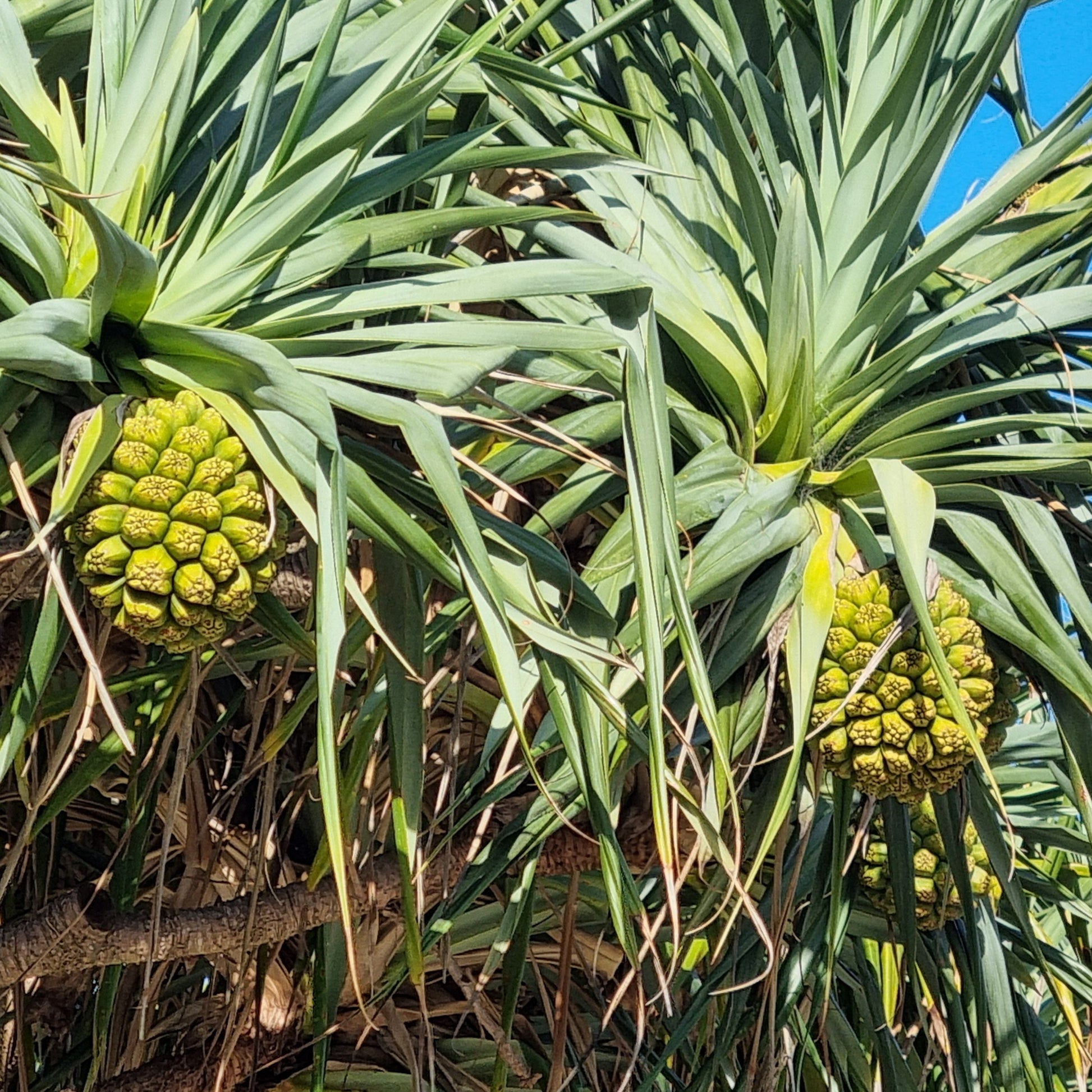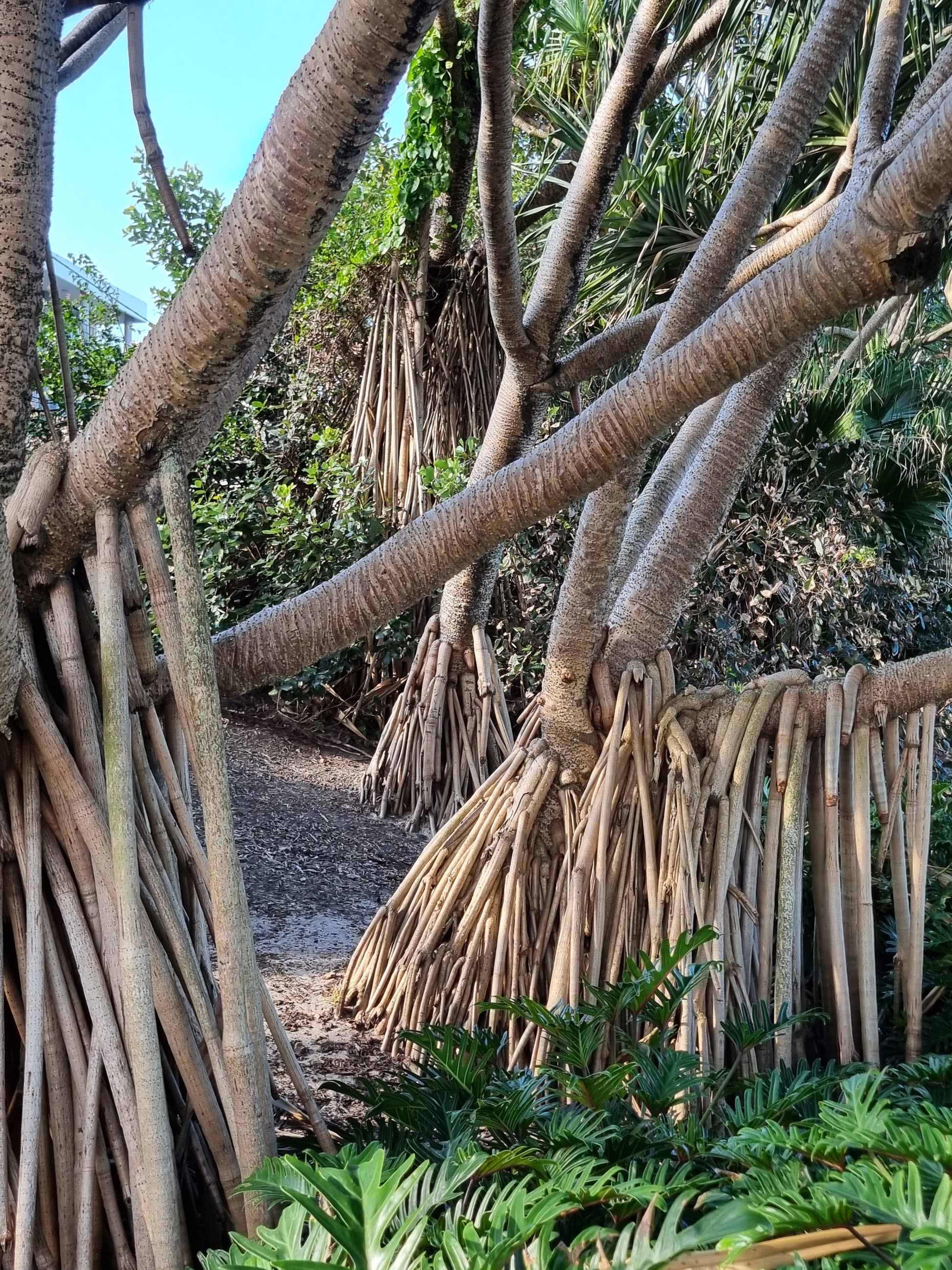Delivertree
Screw Pine - Pandanus pedunculatus
Screw Pine - Pandanus pedunculatus
Couldn't load pickup availability
Pandanus pedunculatus, commonly known as Screw Pine, is a tropical coastal tree known for its unique spiral leaf arrangement, prominent aerial roots, and starchy, edible fruits. Native to sandy coastal areas, it is highly salt-tolerant and ideal for stabilizing dunes or creating a tropical garden feature.
Quick Overview:
- Native to: Coastal areas of tropical and subtropical regions in Australia and surrounding islands.
- Height: Typically grows 5-10 meters in cultivation, reaching up to 15 meters in its natural forested habitat.
- Foliage: Long, spiny, linear leaves arranged spirally around the trunk.
- Trunk: Upright, smooth trunk with prominent aerial prop roots for stability.
- Flowers: Small, fragrant, and inconspicuous, with male and female flowers on separate plants (dioecious).
- Fruit: Large, segmented, starchy fruit ripening to orange or red; edible when cooked.
- Preferred Conditions: Thrives in full sun to partial shade in sandy, well-drained soil; highly salt-tolerant.
- Etymology: Pandanus derives from the Malay name for the plant, while pedunculatus refers to its long fruit stalks.
Detailed Description: Pandanus pedunculatus is a versatile coastal tree renowned for its striking architectural form and ecological significance. Its long, spiny leaves grow in a spiral pattern around the trunk, giving it the name "Screw Pine." Aerial prop roots emerge from the trunk, providing stability and creating a dramatic visual effect, especially in windy, coastal environments.
The tree produces large, segmented fruits that are a traditional food source for some Indigenous communities. The fruits must be cooked to render them edible, as raw consumption can be unsafe. The seeds are also edible and were historically roasted or boiled. Additionally, the fibrous leaves are sometimes used for weaving mats, ropes, and baskets.
Pandanus pedunculatus is exceptionally hardy and thrives in sandy, well-drained soils, making it an excellent choice for stabilizing dunes and preventing erosion in coastal areas. Its salt tolerance ensures it flourishes in seaside gardens, adding a tropical touch to landscapes. The tree is low-maintenance once established, requiring minimal care and little water, even in dry conditions.
Planting Benefits:
- Aesthetic Appeal: Adds a striking, tropical look to coastal gardens with its unique spiral foliage and prop roots.
- Erosion Control: Ideal for stabilizing sand dunes and coastal slopes, protecting against wind and water erosion.
- Edible Fruit: Provides a starchy fruit that can be cooked and consumed, contributing to its value as a bush tucker plant.
- Low Maintenance: Hardy and drought-tolerant once established, withstanding harsh coastal conditions.
- Ecological Value: Supports biodiversity, offering habitat and food for wildlife.
Pandanus pedunculatus is an iconic coastal species that combines beauty, resilience, and ecological functionality, making it a perfect choice for both practical and ornamental landscaping in tropical and subtropical regions.
Share
